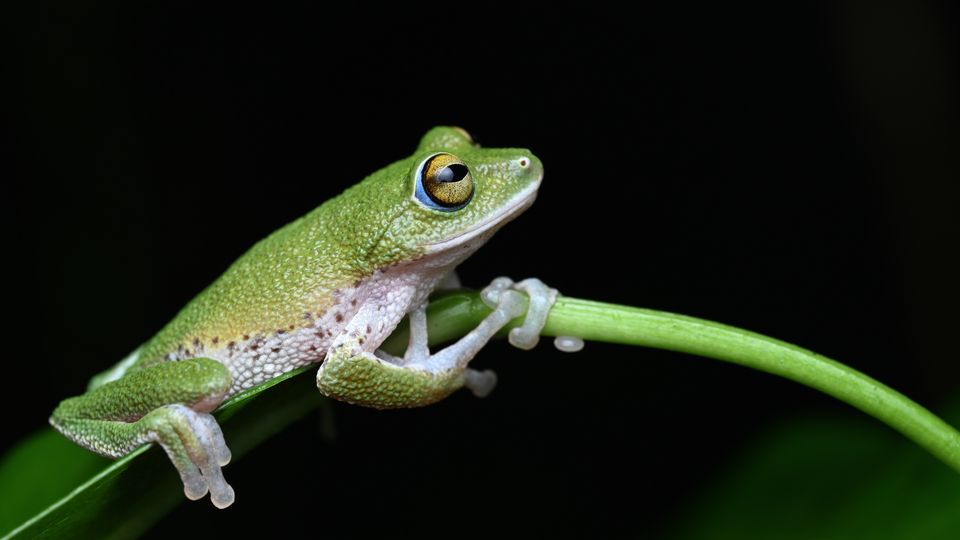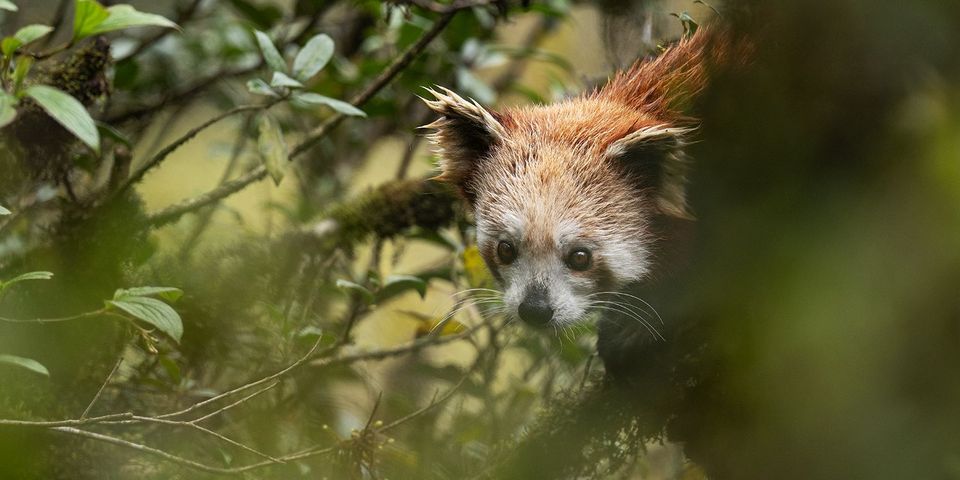Some childhood memories leave a distinct imprint. This one happened a long time ago, probably when I was in primary school. Those days, the backyard of our house in Hyderabad used to have a cement tank. Complete with cracked outer walls that were painted green by mosses. A large mango tree next to it gave us ample shade and, come summer, plenty of delicious mangoes. Custard apples, pomegranates, lemons and sapota (chikoo) added to our homegrown fruit collection.
A small hole in the ground next to the tank housed a tap, the purpose of which I could never decipher. The hole was covered with a stone. For my brother and I, the stone presented a mystery that had to be solved. That afternoon, in the midst of play, we got adventurous and moved the stone. The tap had company. Something brown with a lot of ridges, folds and warts. It was the most humongous frog that we'd ever seen (it looked a lot bigger than it probably was to us kids). It leapt out. We jumped too, before running away into the safety of the house.
Thinking back, it was probably a Common Indian Toad (Duttaphrynus melanostictus) or an Indian Bull Frog (Hoplobatrachus tigerinus). In those days (I hate to use that phrase as it sounds so uncle-like), frogs were very common in our backyard. The mildest of drizzles brought them out in good numbers. Today, I rejoice if I see even a single tiny toad through the entire monsoon.
It had been raining all day. Well, almost. Short breaks gave us tiny windows of opportunity to explore the remaining patches of ancient forest around us. Where we were, the mountainsides went only one way - down. We were on a ridge at an elevation of around 1,200m in the tropical rainforests of Sri Lanka.
Battered by wind and rain all year round, the trees here were short. Purple-faced Leaf Monkeys, endemic to the island, appeared one instant and disappeared the next just like the clouds. As we walked around, we stumbled upon some of the coolest lizards I've seen (more on that in a later post). Very soon, the ascending "hush" of the approaching rain falling over the forest would send us rushing for shelter.
Around sunset, the rain stopped. May be the clouds needed some rest too after a busy day. As darkness crept in, the effect of the continuous rain was eminently audible. Frogs called incessantly from the vegetation all around. Most calls traced back to tiny green frogs. Very similar-looking, they were in fact 2 different species - Golden-eye Shrub Frog (Pseudophilautus ocularis) and Poppy's Shrub Frog (Pseudophilautus poppiae).
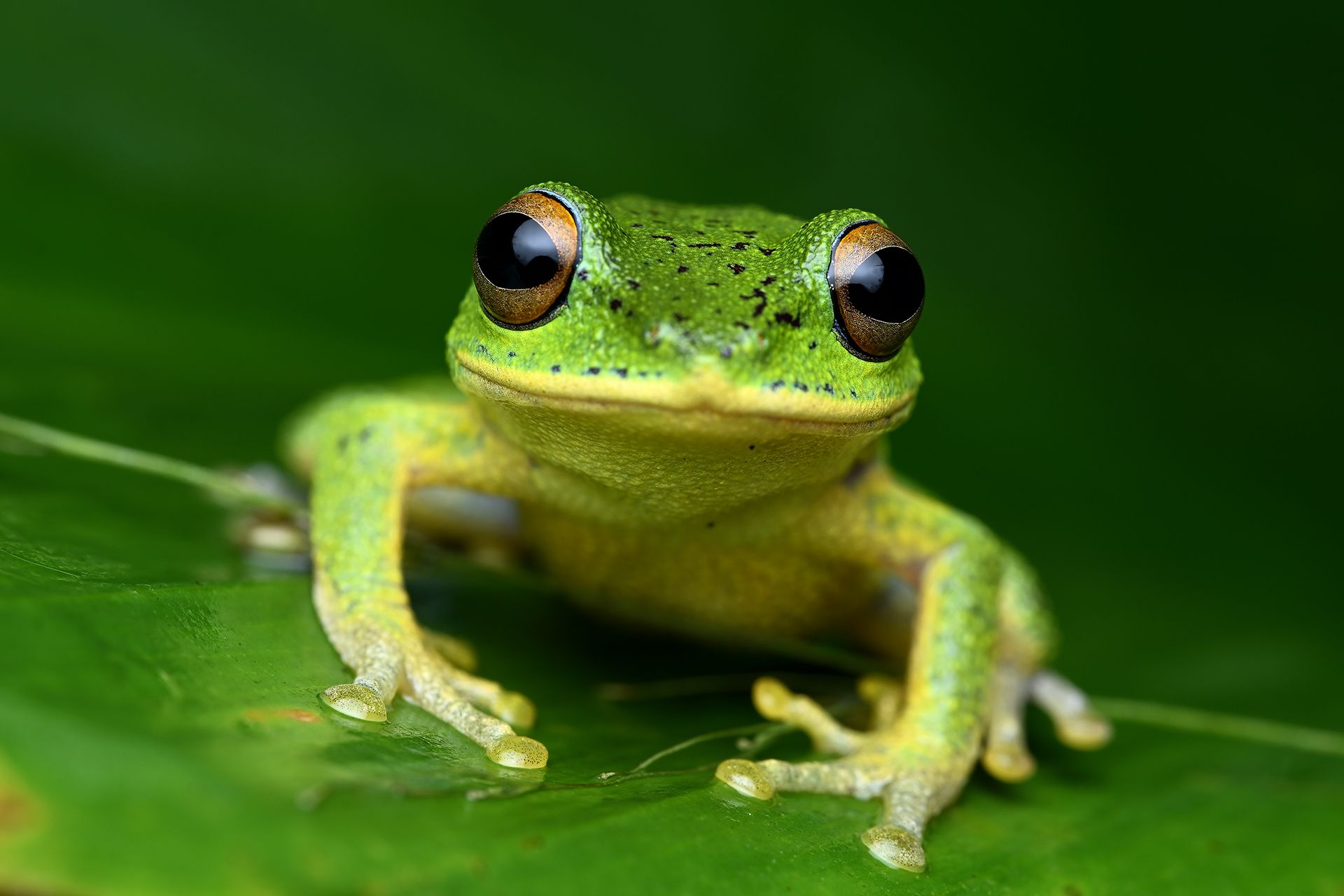
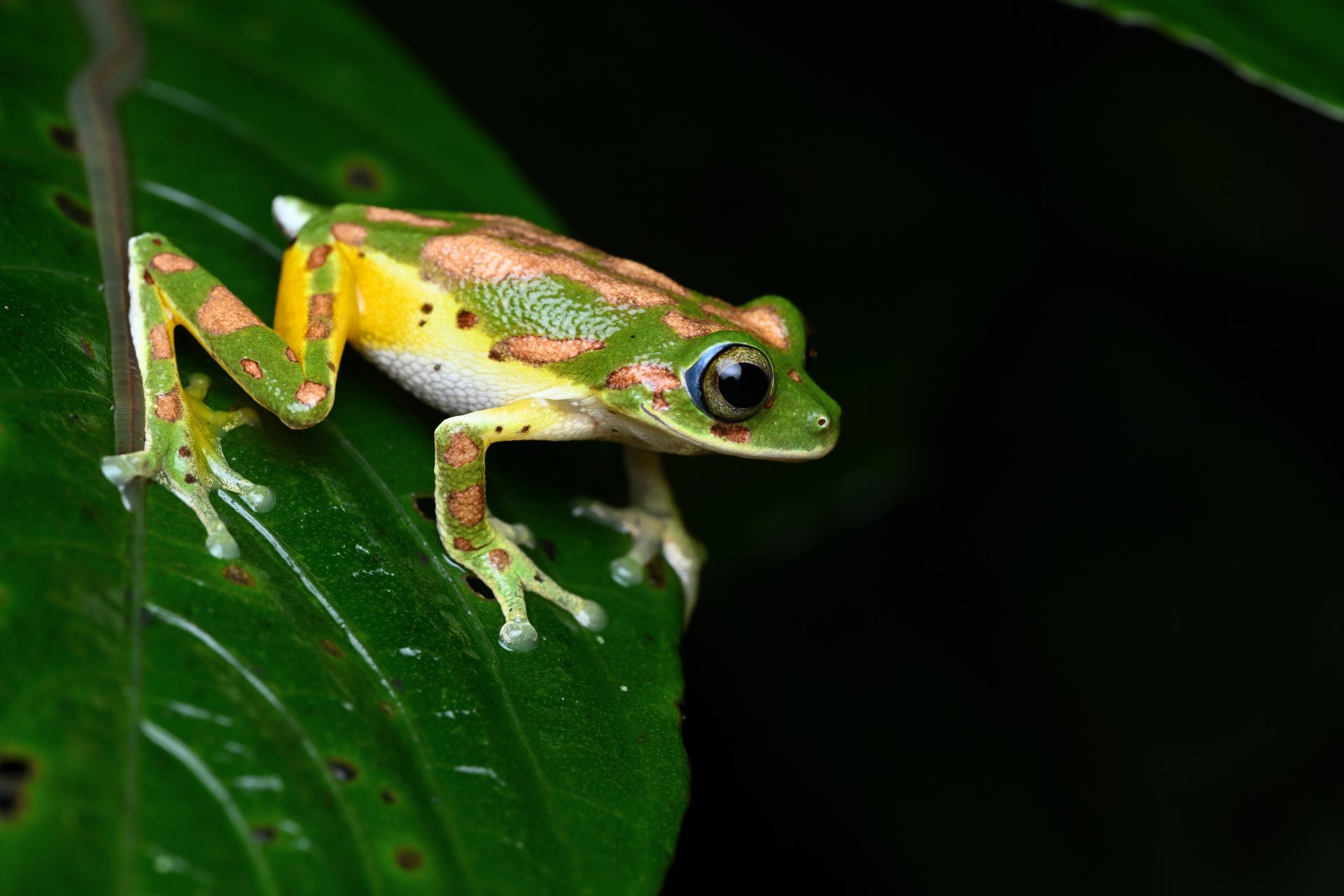
The walk through the undergrowth was not easy, navigating the steep and often rocky terrain, brushing aside low-hanging branches while making sure that there were no snakes or worse, large hairy caterpillars, on them. We came across a couple of other species of Shrub Frogs - Pseudophilautus decoris (Elegant Shrub Frog) and Pseudophilautus lunatus (Handapan Ella Shrub Frog).
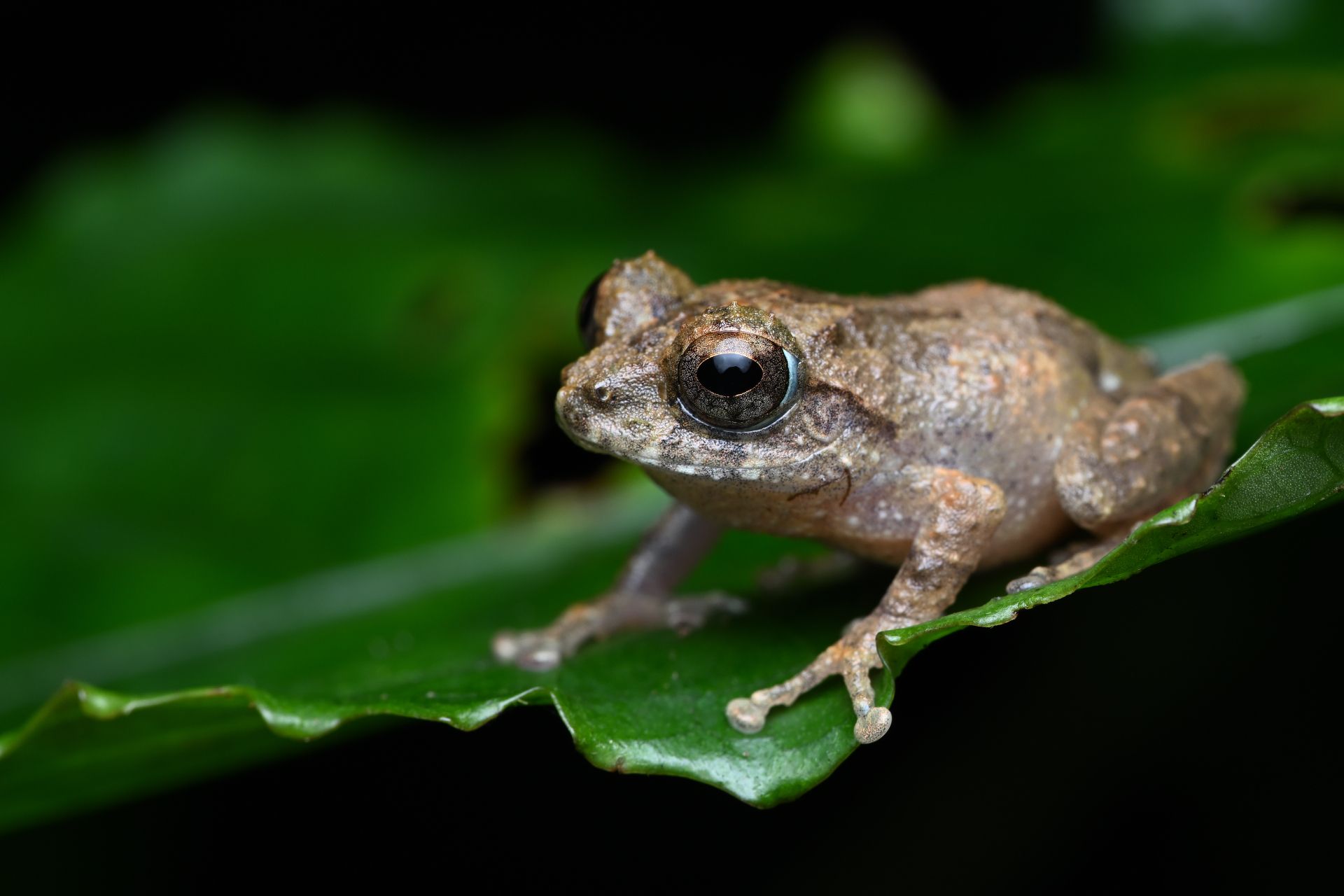
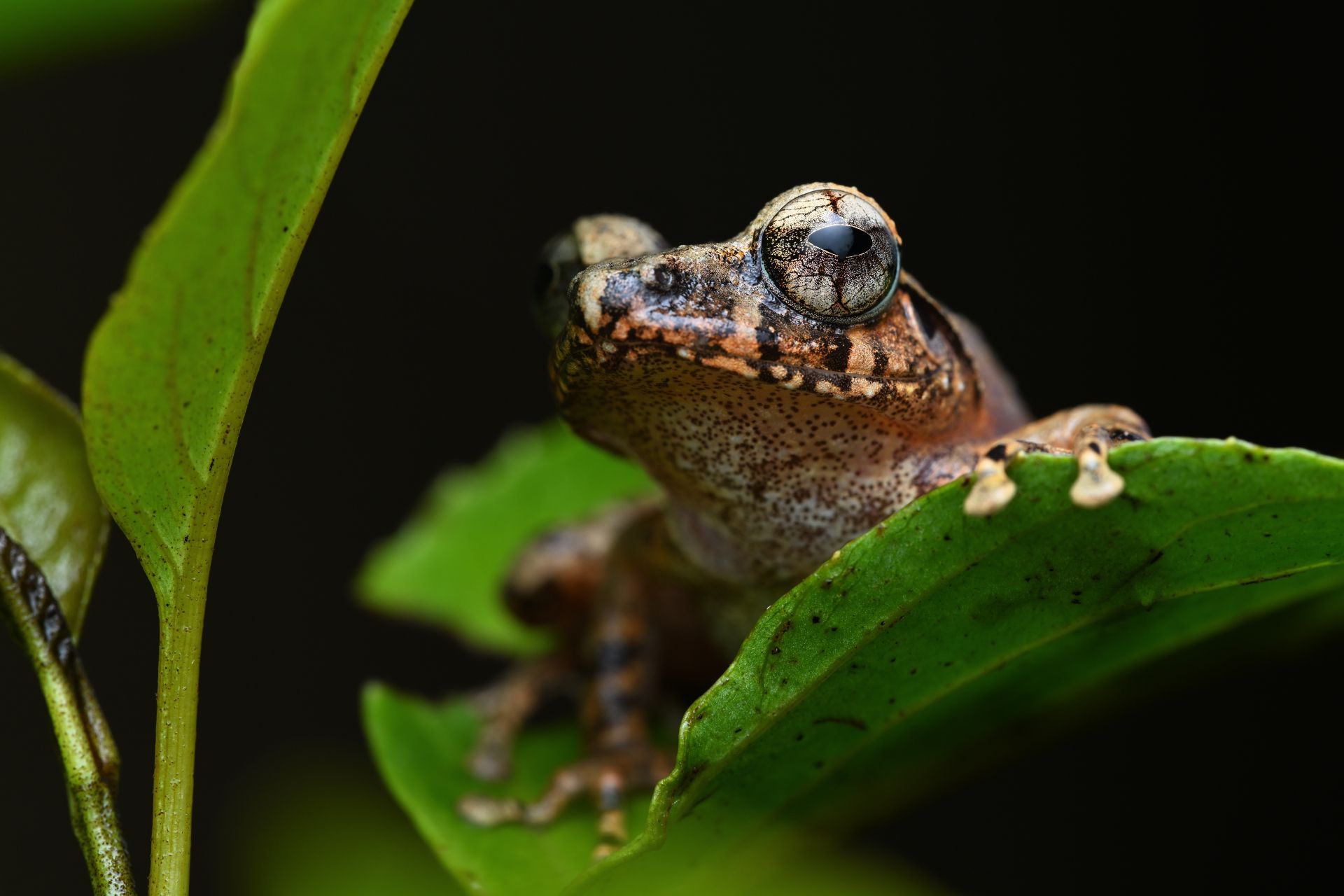
Over 120 species of amphibians are recognized from Sri Lanka. Shrub Frogs of the genus Pseudophilautus make up over 50% of the frog biodiversity in the island, with 65 extant species. Another 4 species are currently recognised from the Western Ghats of India. They are small to medium sized frogs that don't have a tadpole stage. The eggs develop directly into miniatures of adults and this makes fully terrestrial development possible. Periods of low humidity could be detrimental for the eggs, though.
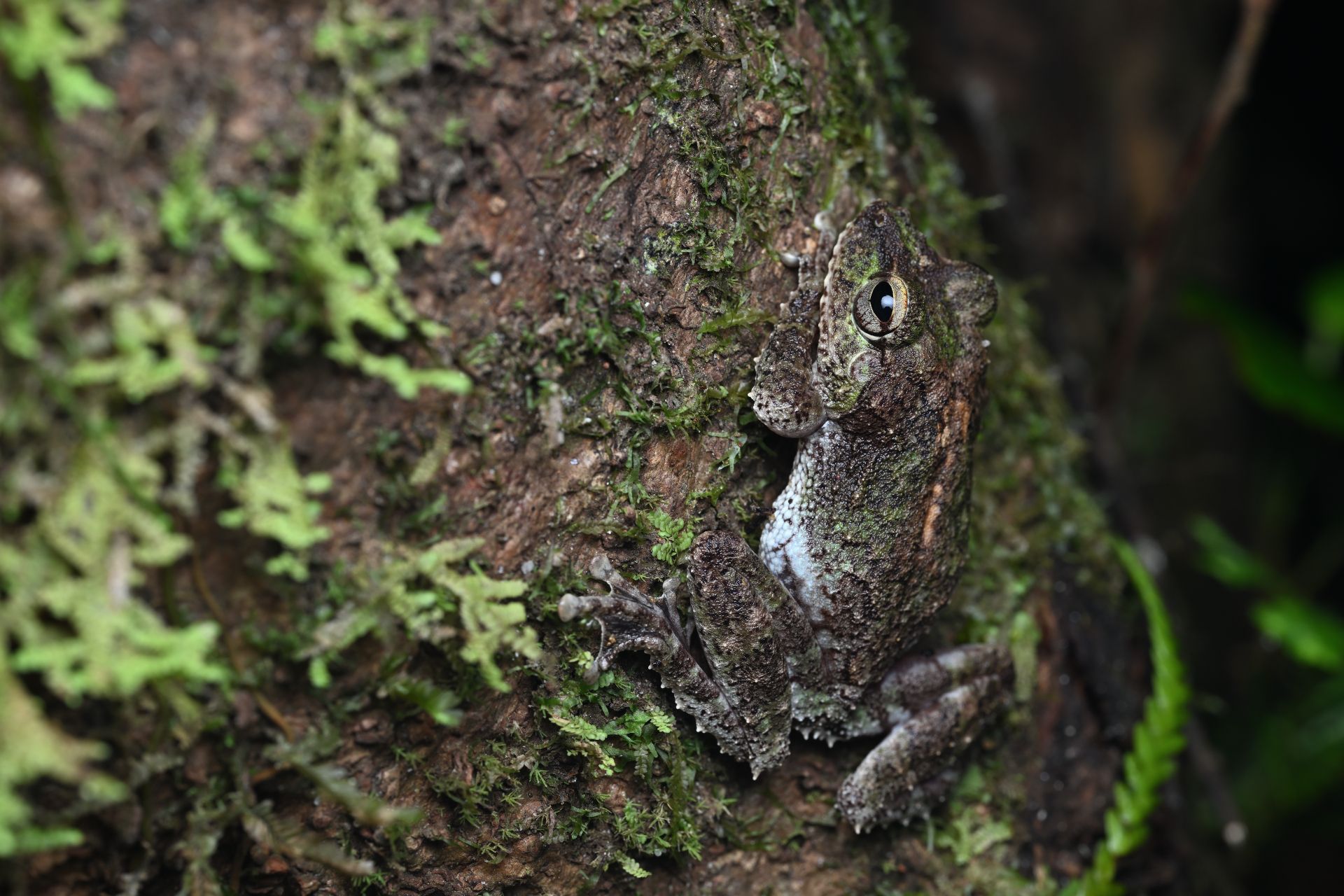
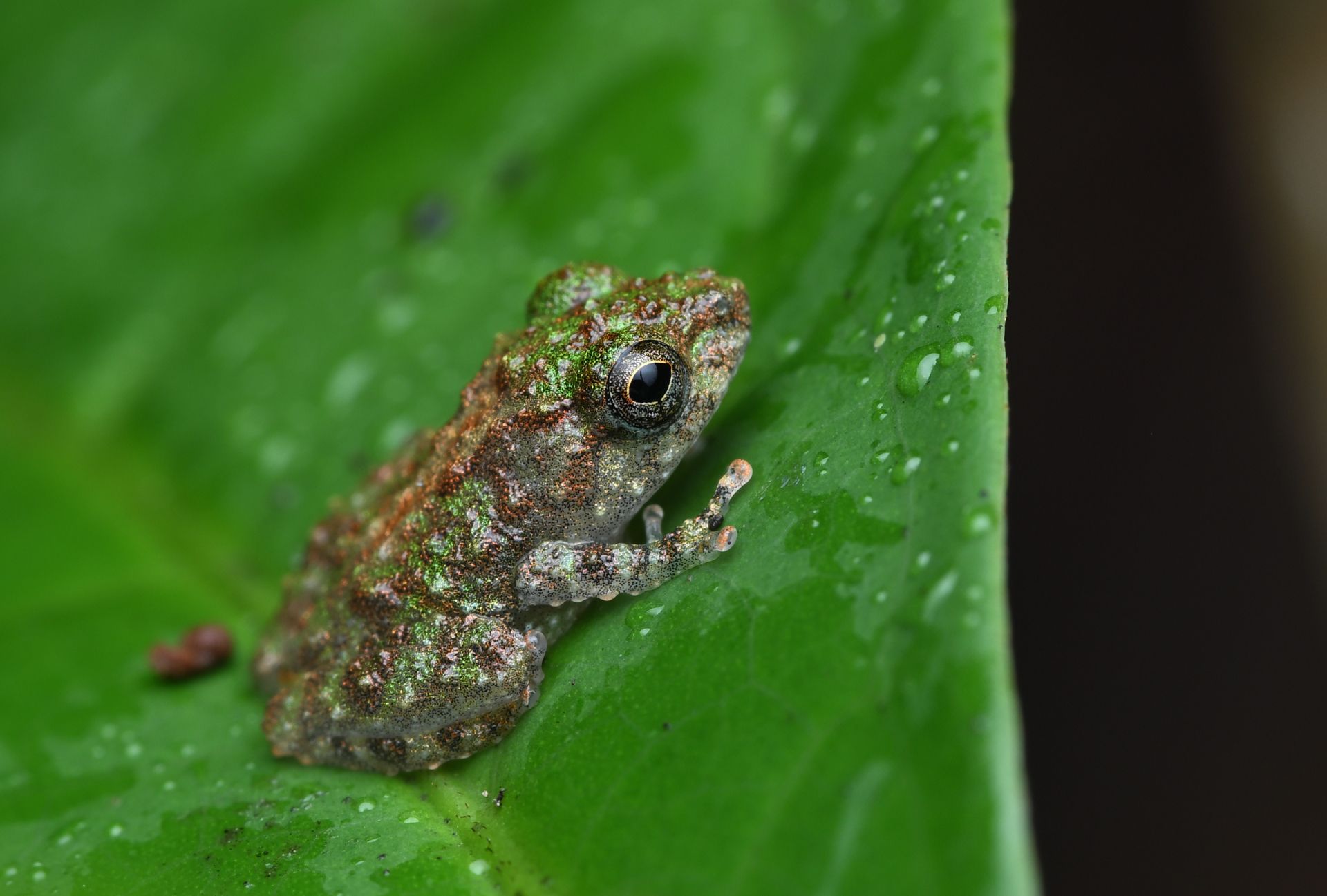
Back to our trail, there was one frog that I really wanted to see. Taruga is a tree-frog genus that is endemic to Sri Lanka. With their characteristic long snouts they are unlike other members of the Rhacophoridae family. Soon, the Morningside Saddled Tree Frog (Taruga fastigo) showed up on the trail.
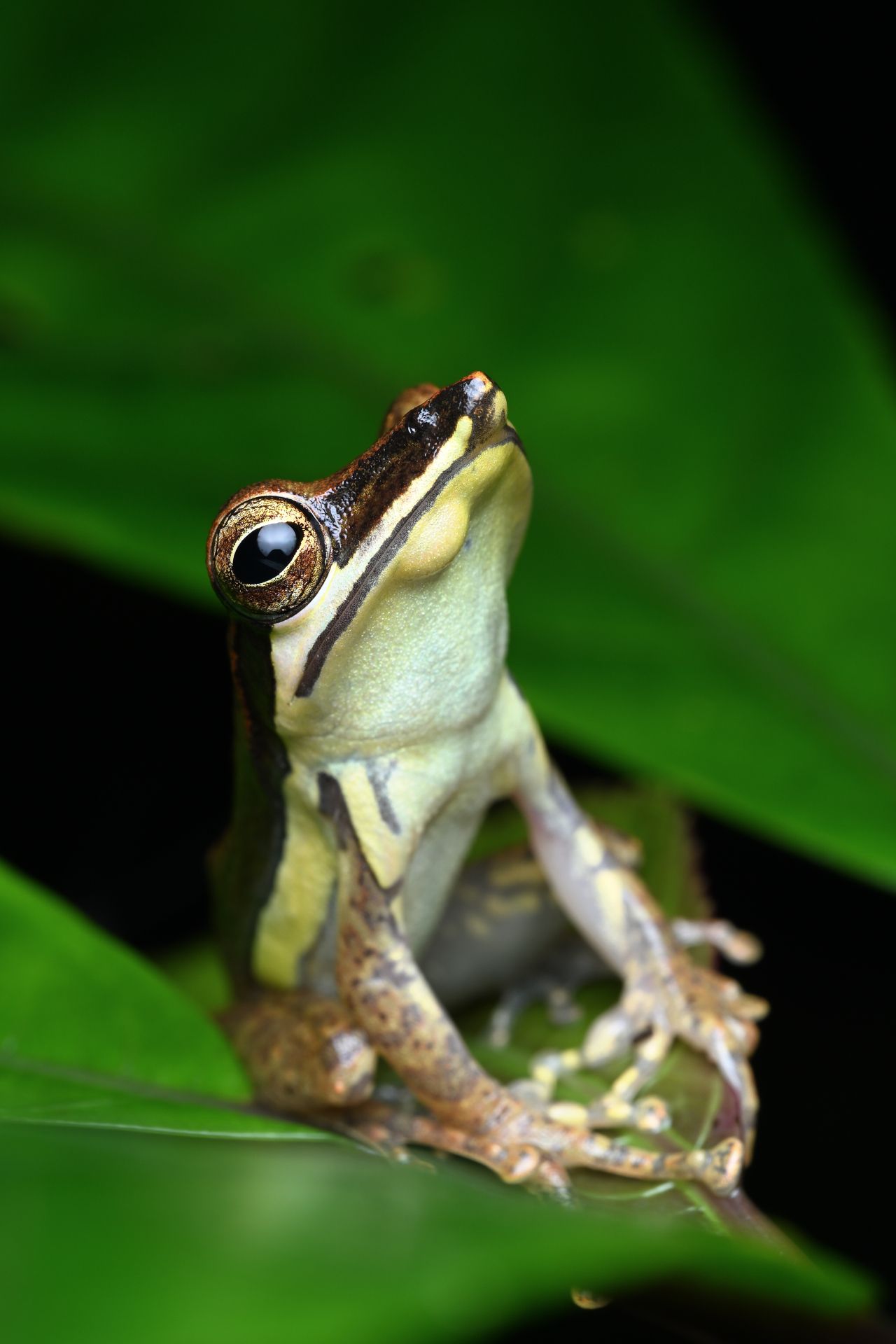
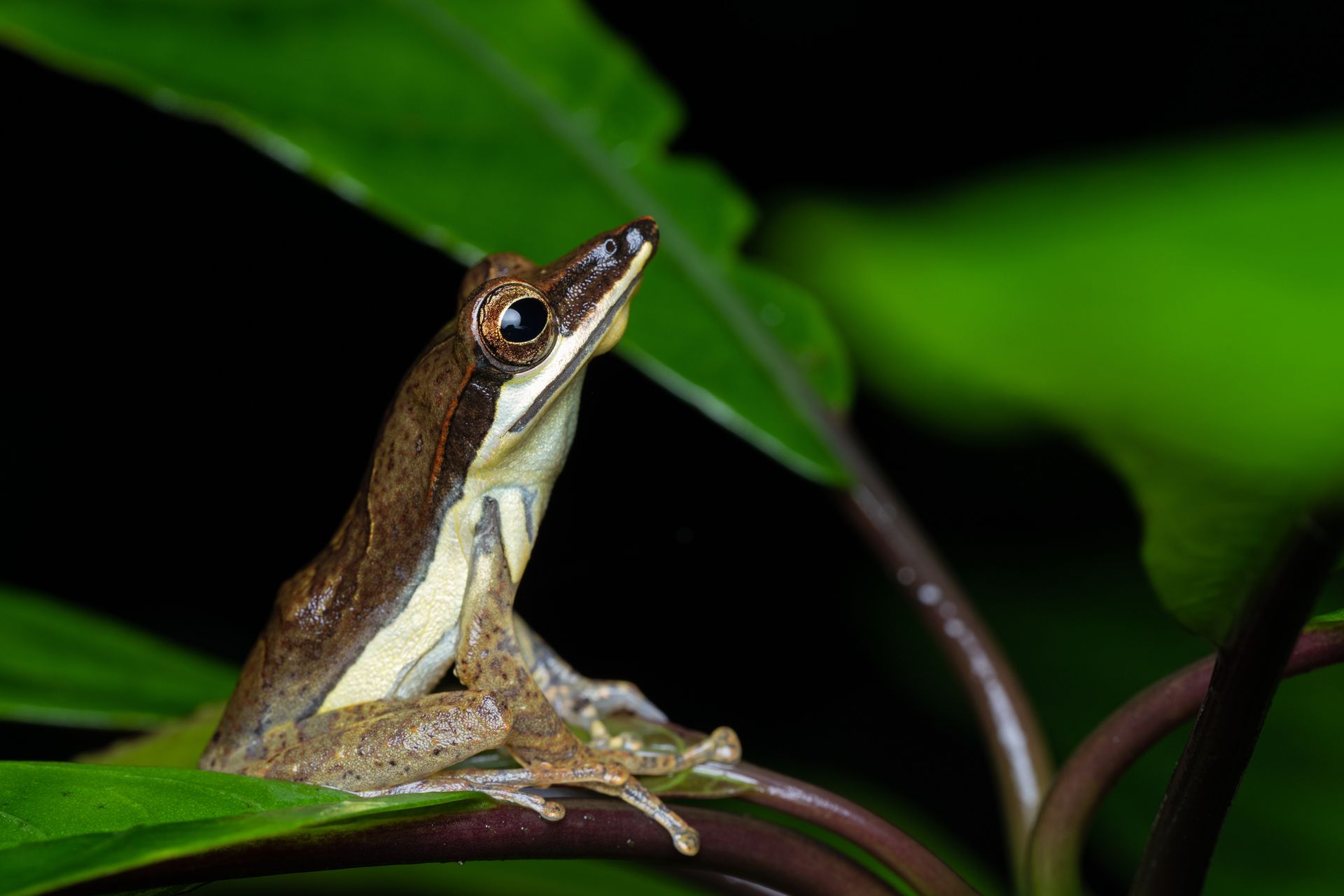
A round of high fives was in order as we'd seen all the species that we'd set out to see that evening in a very short time. "They are all point endemics", my friend and guide, the amazing Udaya Chanaka, pointed out. They were only known to live in a small area around the mountain ridge and nowhere else on the planet.
On our walk back, we came across many more of the green frogs. They were everywhere!
The air was filled with their calls. They were coming from everywhere. Yet, it seemed that they had all donned invisibility cloaks. In a small stream in the Knuckles range, we were looking for a very special frog. Following every call ended up in a dead-end, with a tree hollow or a pile of twigs forming a barrier.
On the shrubs and creepers around, Shrub Frogs of various shapes, sizes and colours seemed to be thoroughly amused by the people stumbling around.
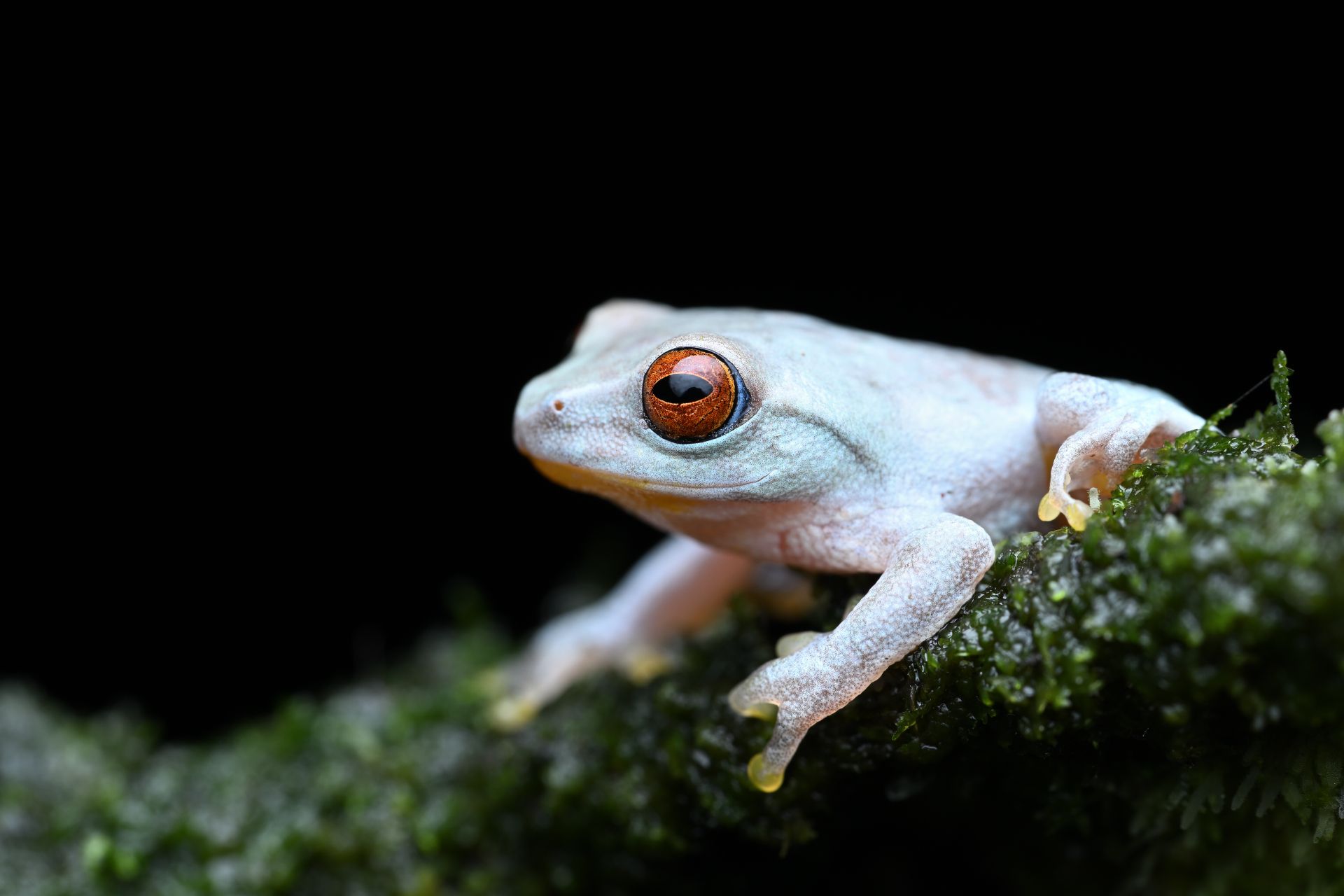
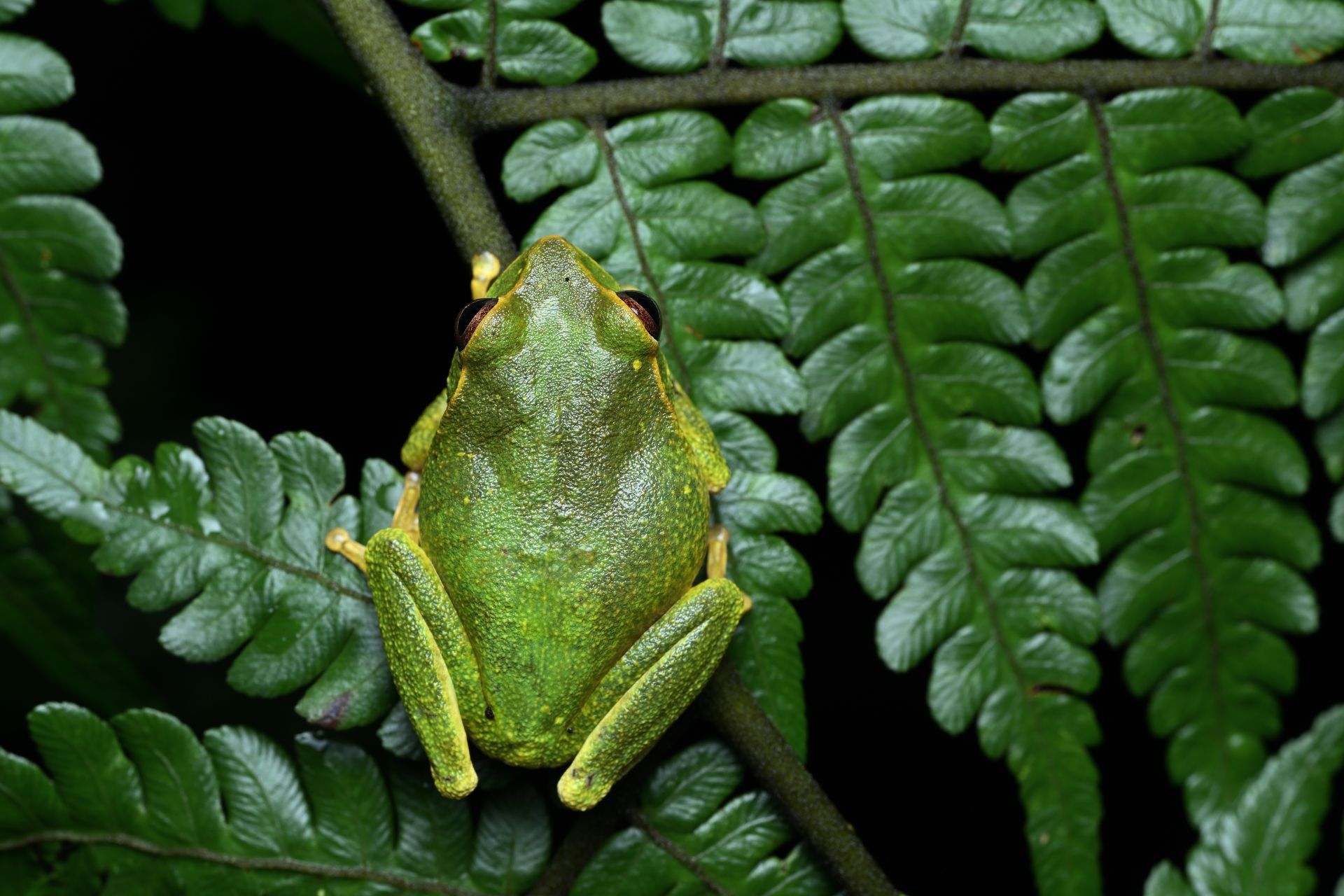
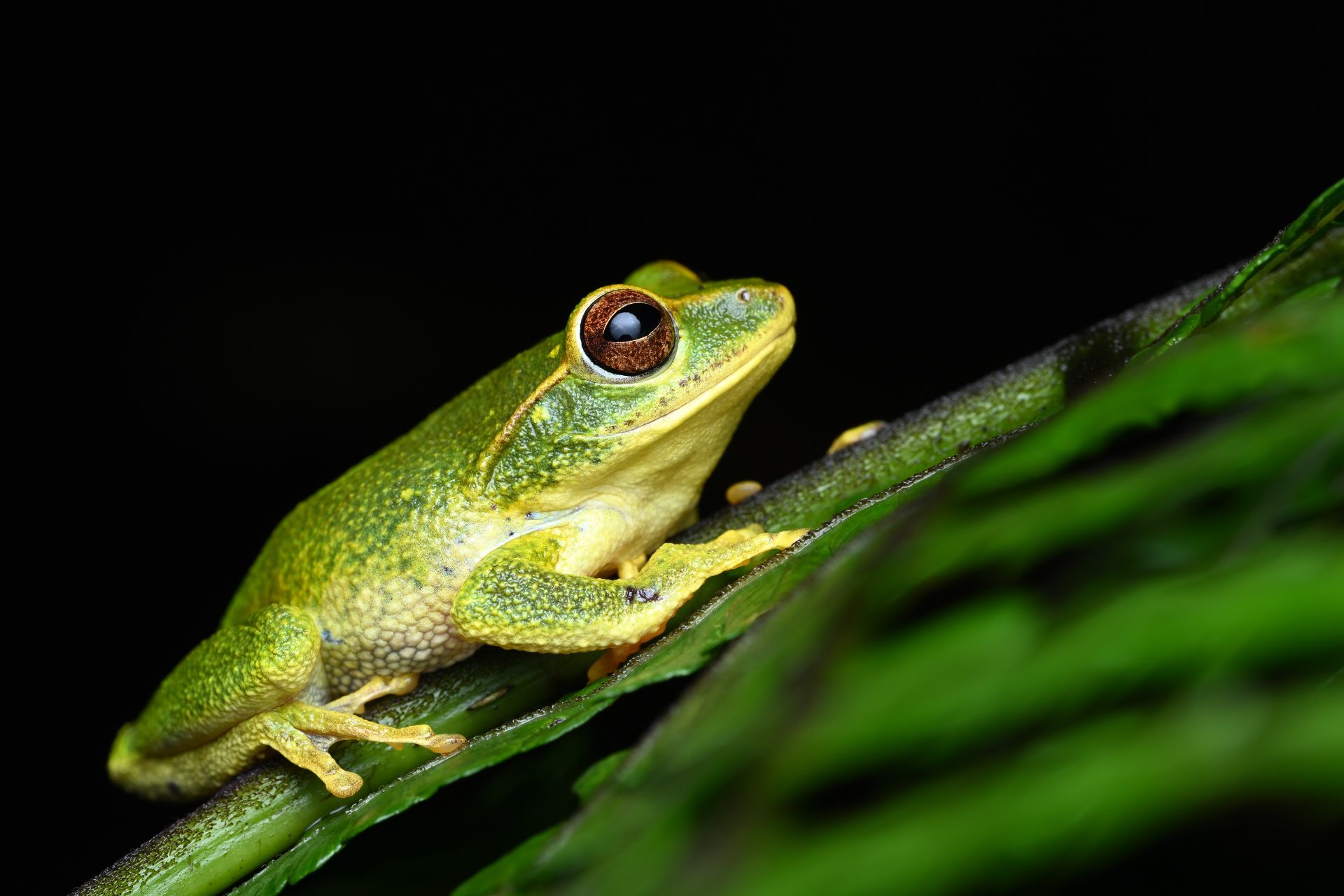
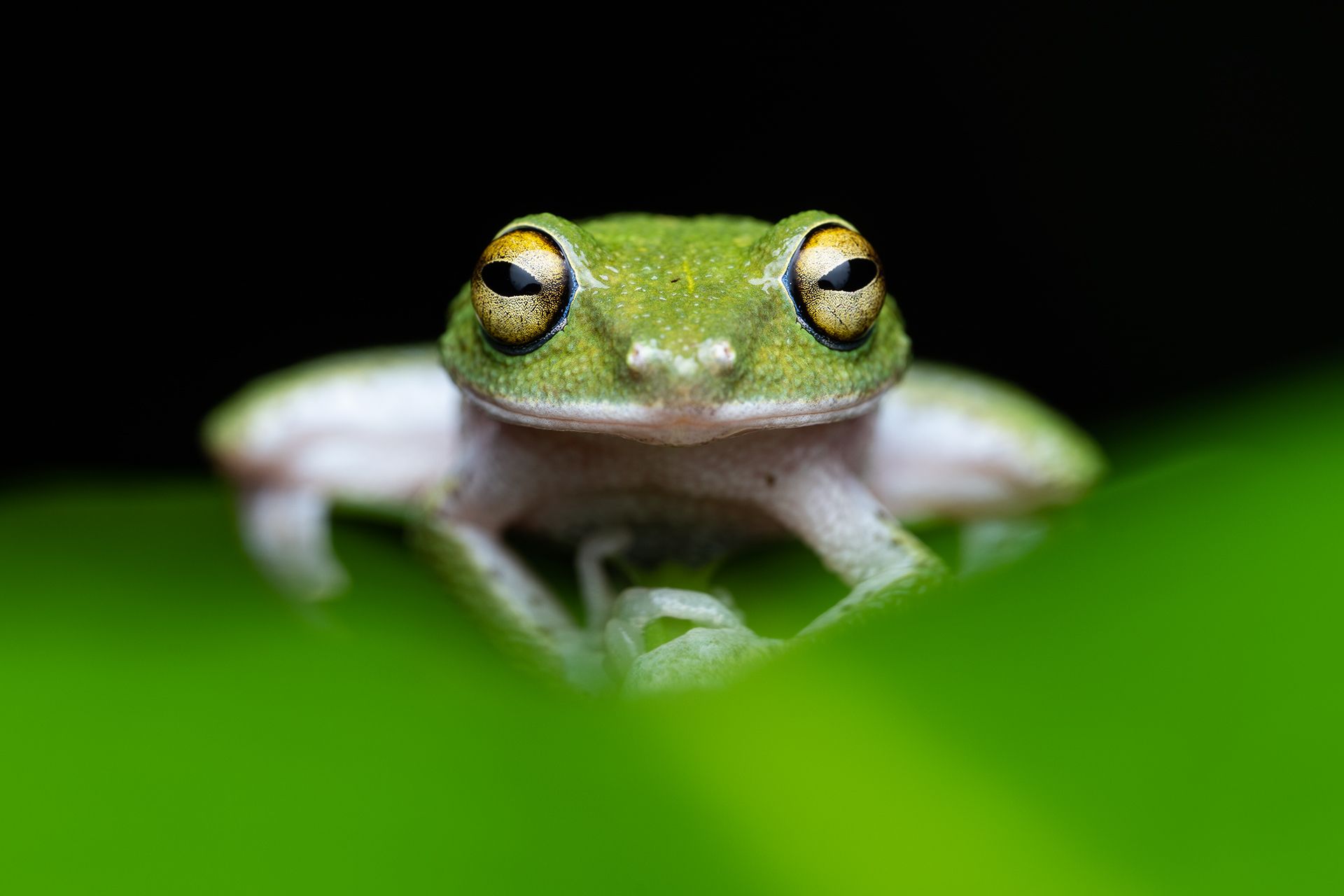
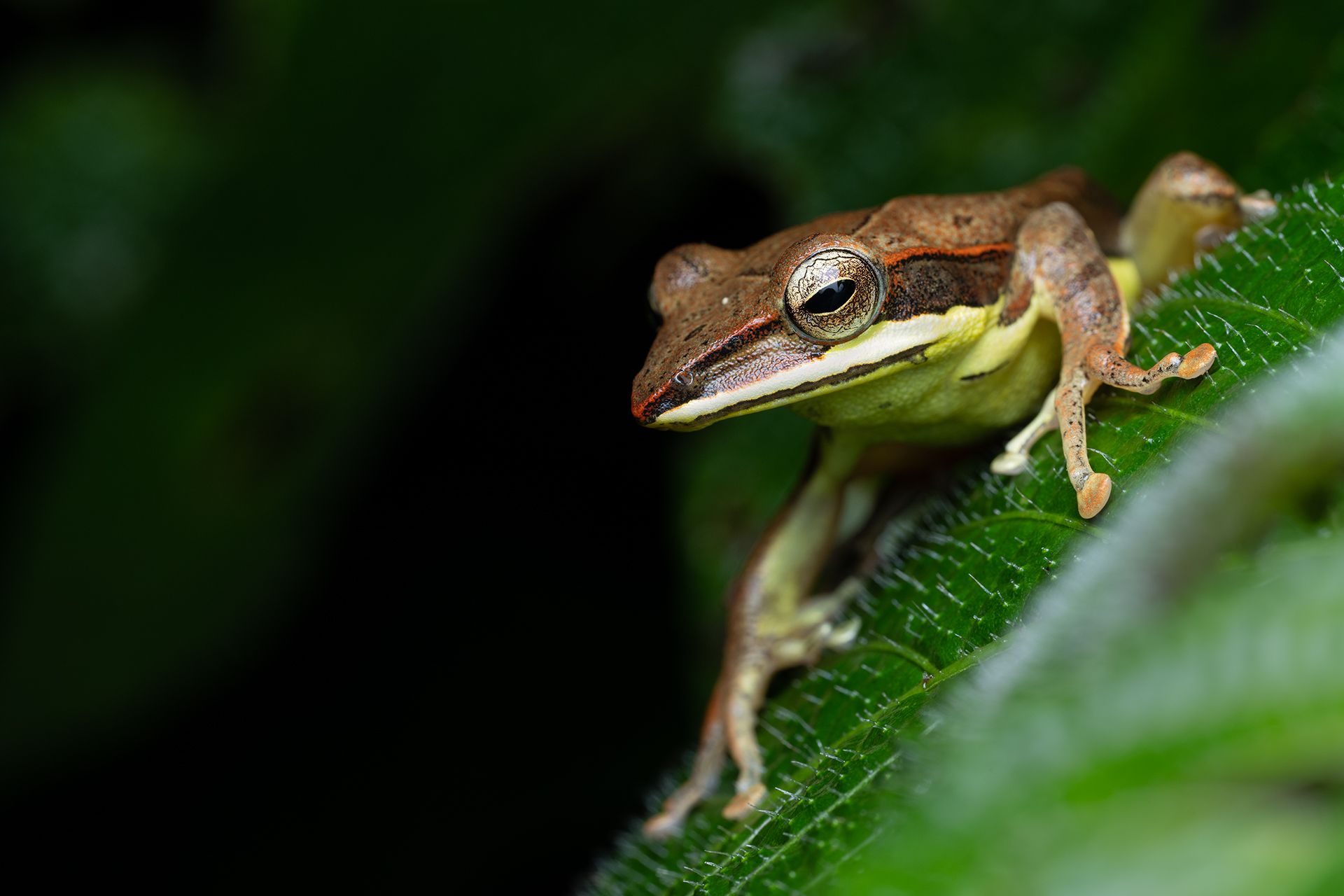
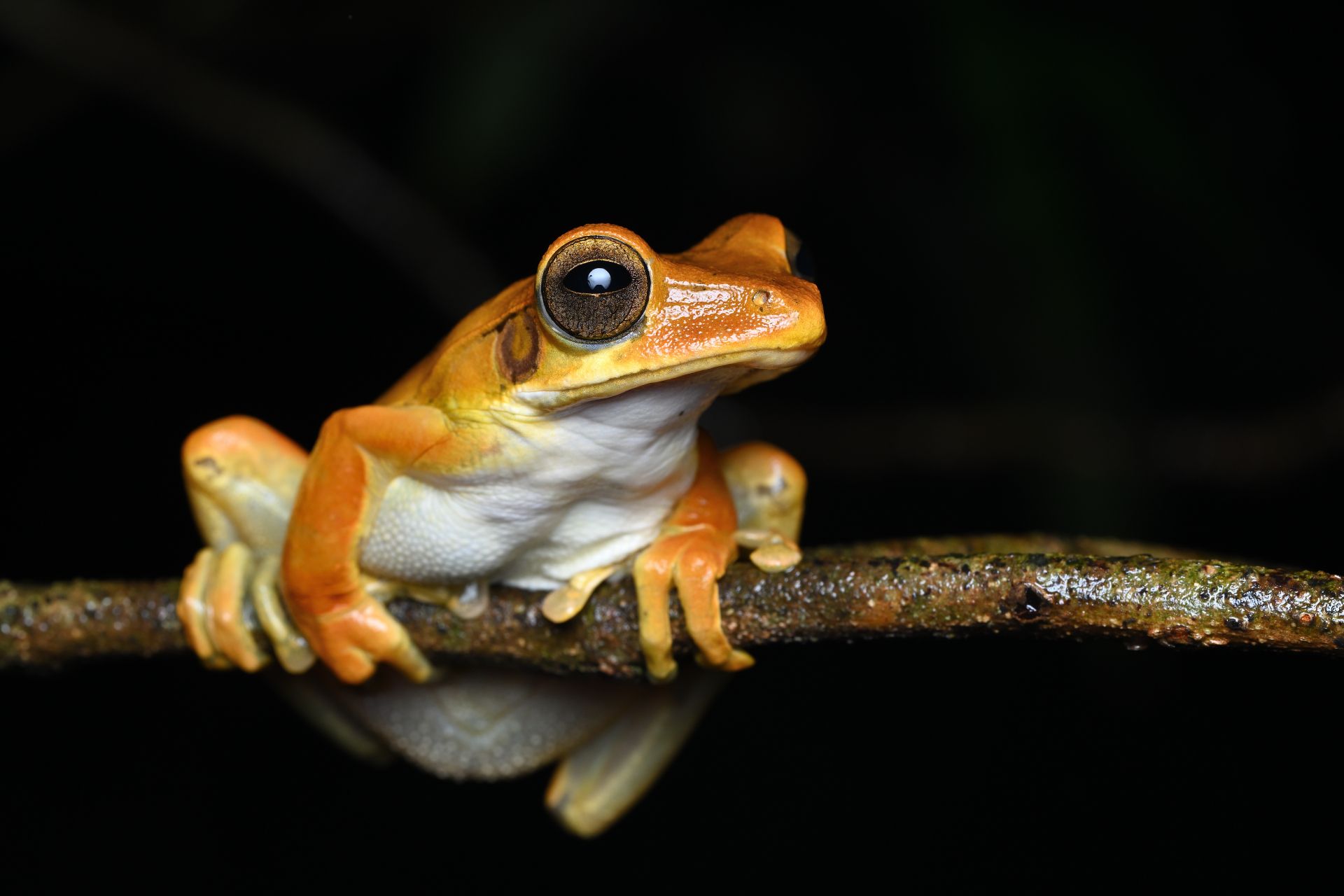
So many interesting frogs, yet the loudest one was also the most elusive. We'd almost given up and had started to head back, when this frog appeared out of nowhere in the water.
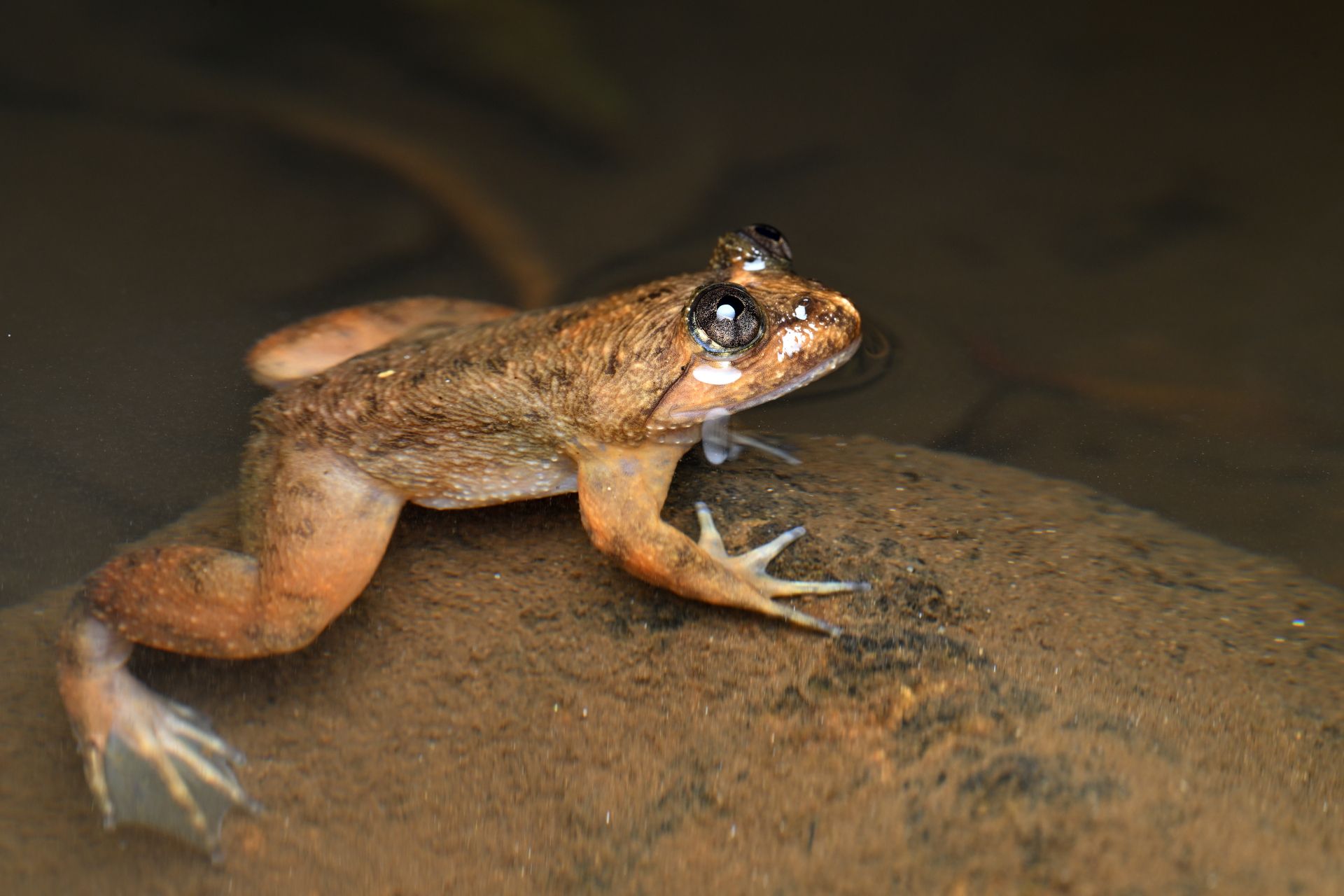
One out of only 2 known species from the genus (endemic to Sri Lanka), the Corrugated Frog (Lankanectes pera) was described in 2018 and is known only from a few places. Earlier in the trip, we'd come across its relative, Sri Lanka Wart Frog (Lankanectes corrugatus), in the lowland rainforests of Sinharaja. My first reaction when I saw one was "this looks like a Nyctibatrachus (night frogs from the Western Ghats)". They belong to the same family - Nyctibatrachidae.
As we drove down to our resthouse, we stopped at another stream. Not sure if I could call it that, though. It was just water trickling down a flat rocky surface. Careful scrutiny revealed something stuck to the rock surface. Frogs, of course. They were Kirtisinghe's Rock Frog (Nannophrys marmorata), belonging to yet another genus that is endemic to Sri Lanka. These frogs have flattened body and cling to the wet rock surface. They rest in rock crevices.
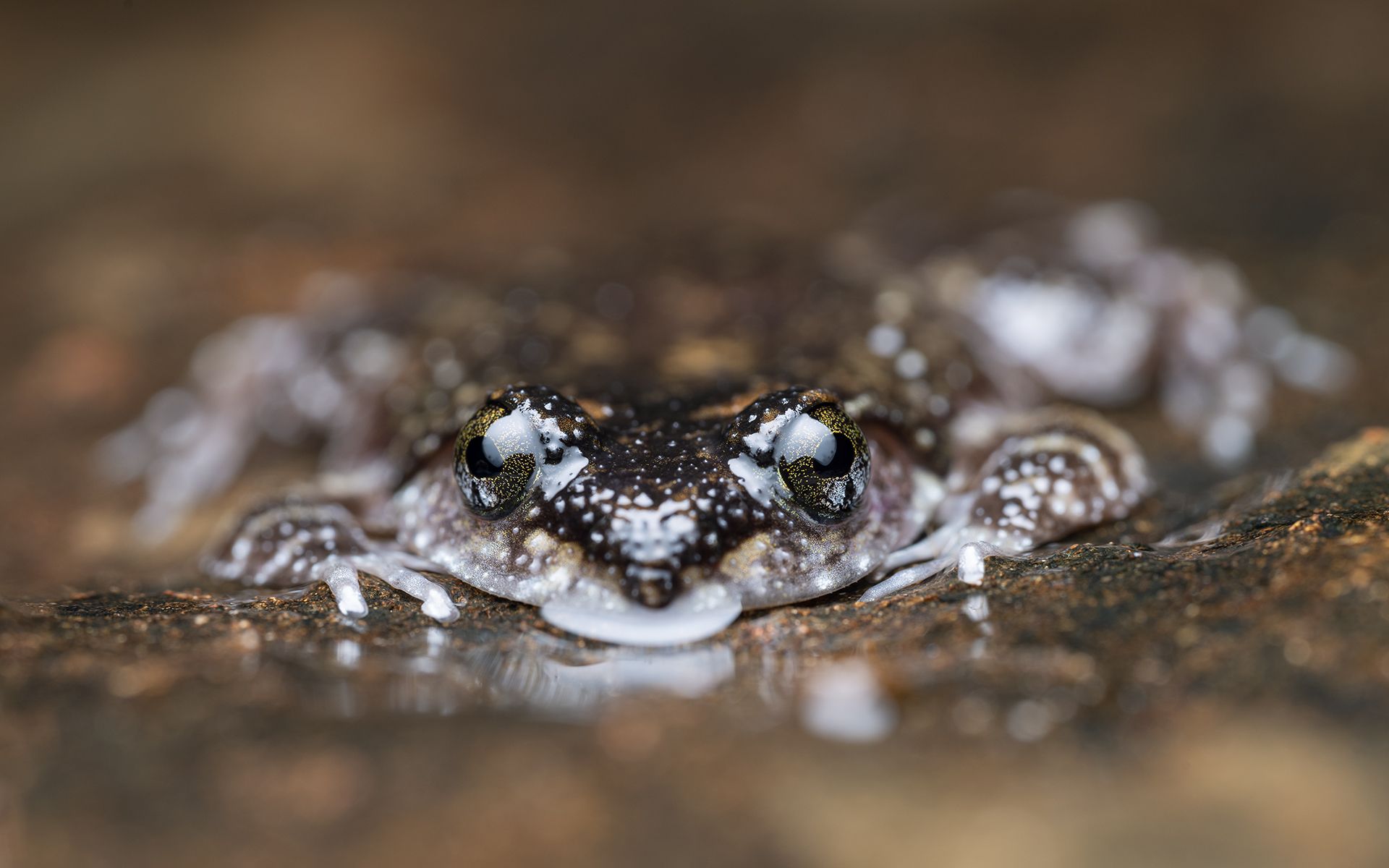
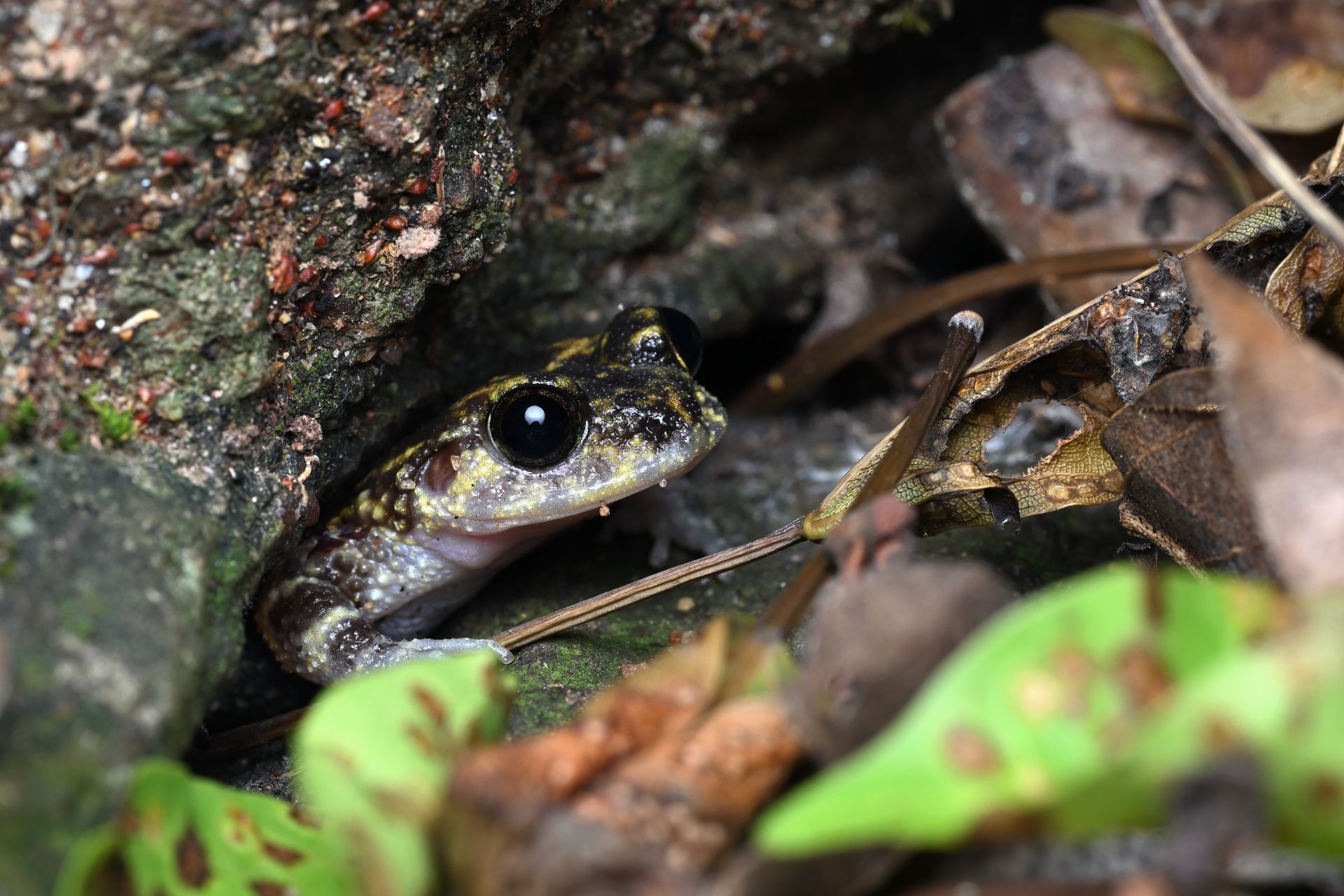
At an elevation of over 1800m, Nuwara Eliya is Sri Lanka's tea production capital. And a bustling holiday destination. It was also the highest elevation that we visited on this trip. Tiny patches of rainforest still exist around the city and these hold increasingly isolated populations of endemic wildlife. It took us less than an hour on a rainy evening to find the species that we were looking for. All this within a private garden!
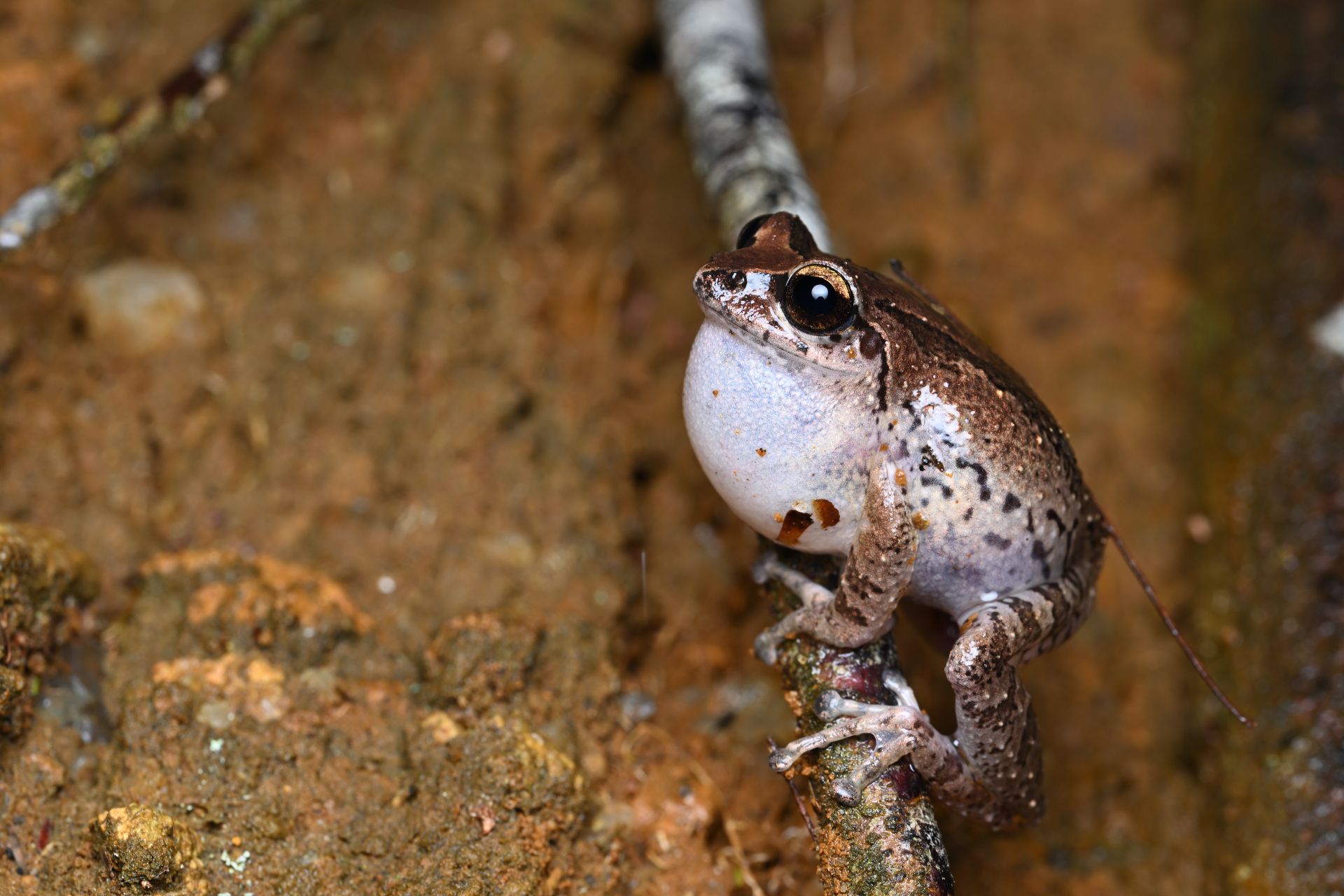
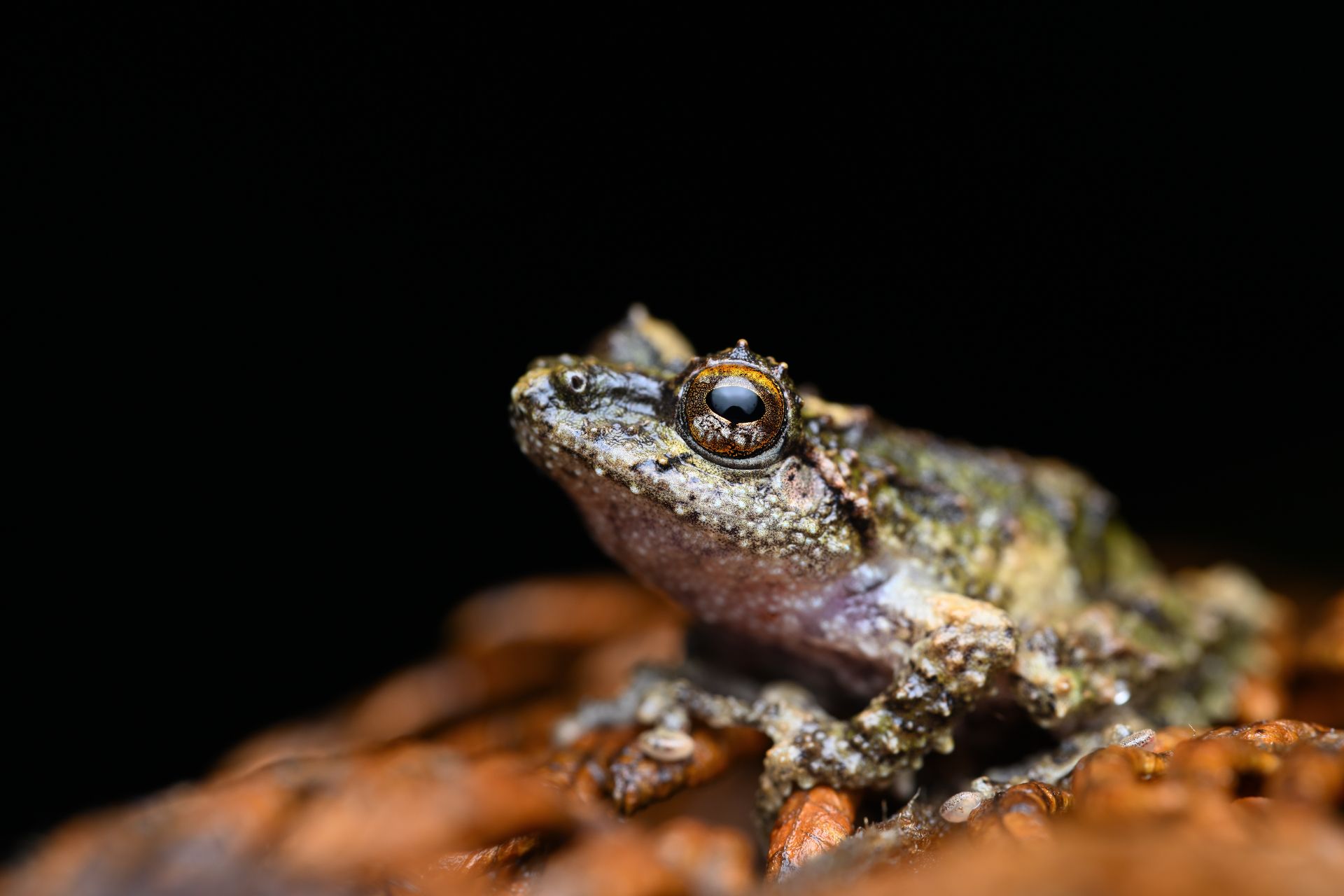
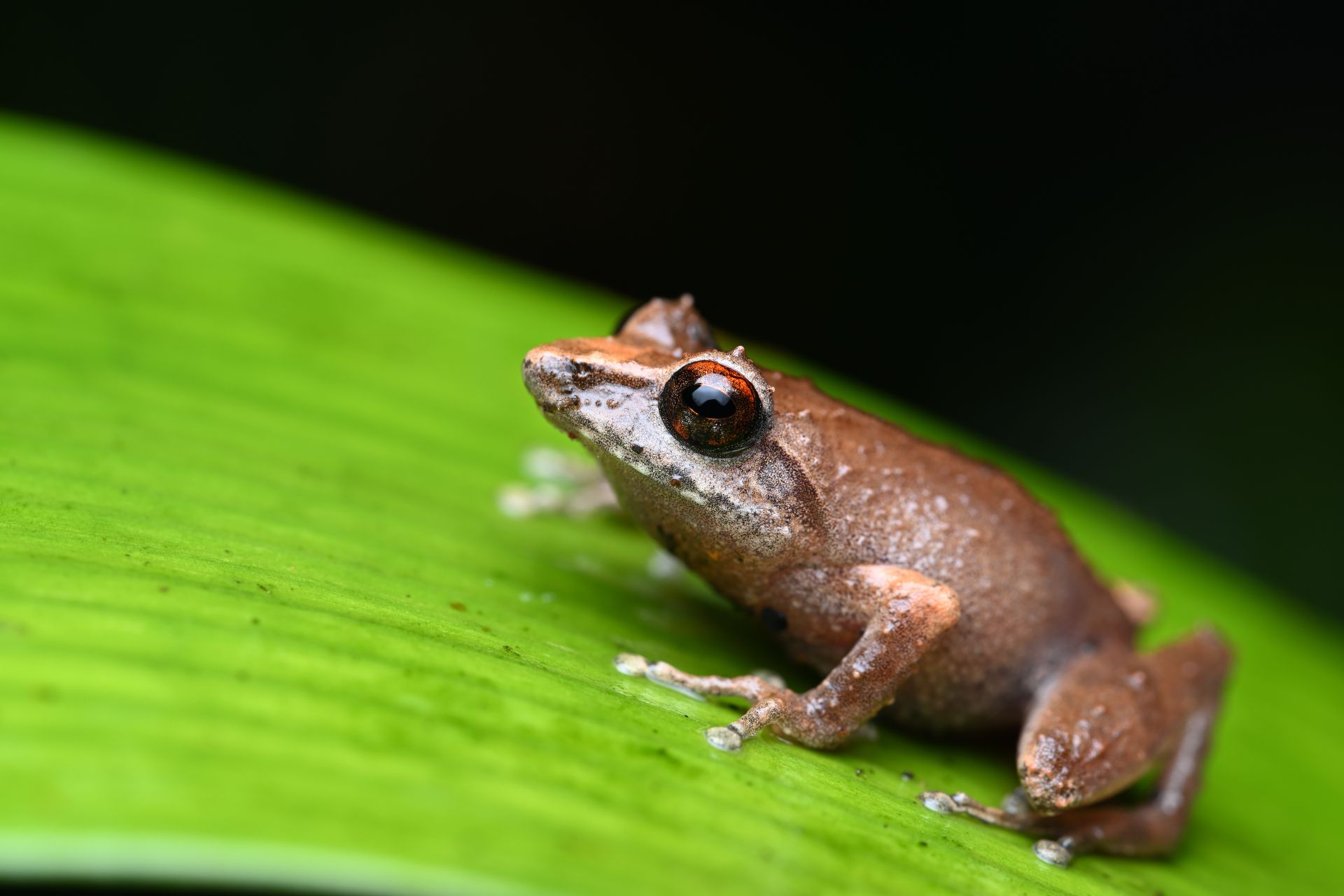
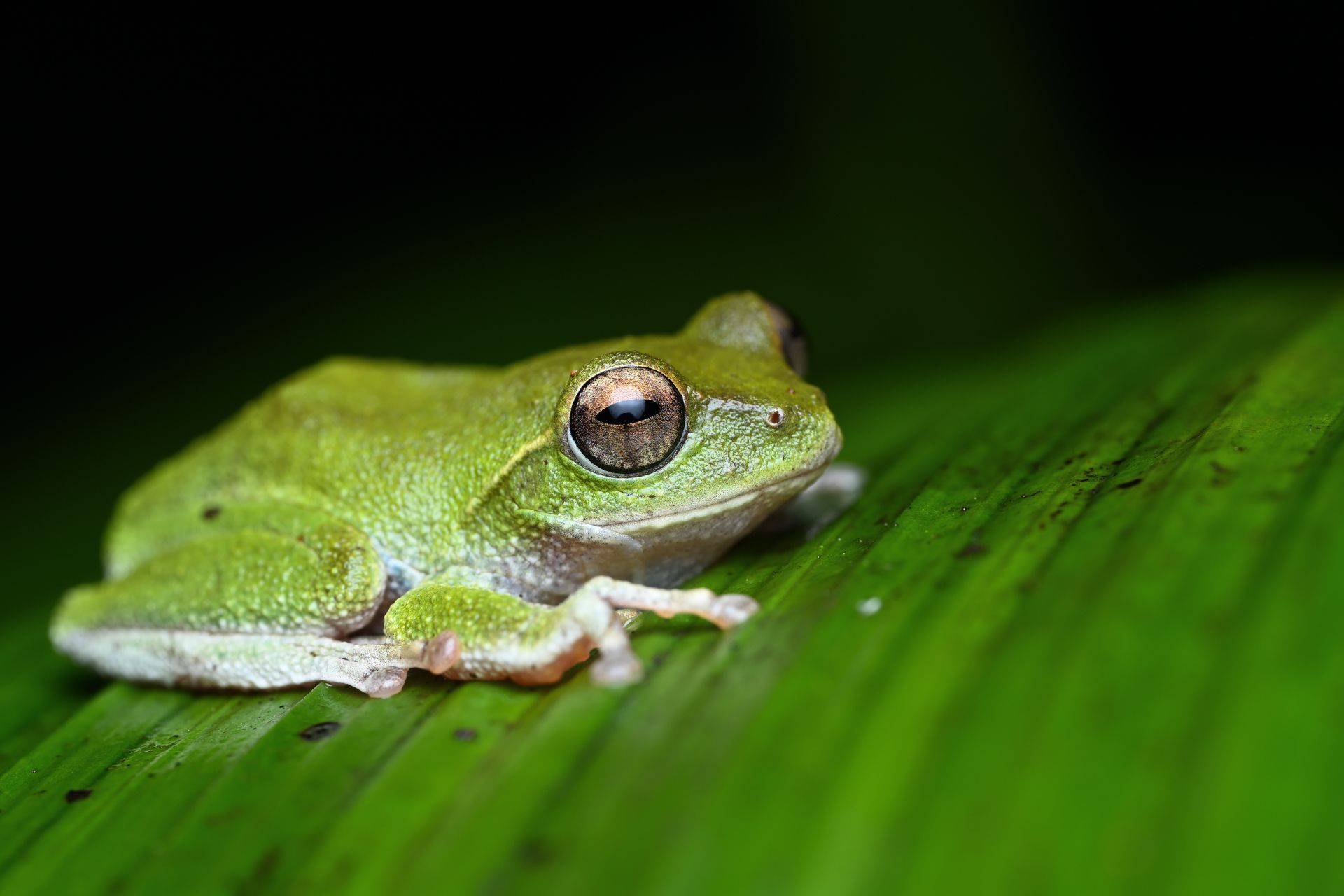
10 days in Sri Lanka was truly a revelation on island biodiversity. This despite the fact that we'd covered only a representative set of places in the wet zone of the country, traveling through a fraction of the island. From the lowland rainforests around Sinharaja to the high elevations of Nuwara Eliya to the incredible Knuckles range, it was truly a rollercoaster ride across various mountain ranges in the island. The tall trees (Dipterocarpus sp.) with giant buttresses in the lowland rainforests contrast with the short trees and grasslands at the highest elevations. And, as you've read so far in this post, the diversity of fauna (exemplified by frogs here) varies incredibly with mountain ranges and elevations.
When we arrived at the lowland rainforests of Sinharaja, sleepless and tired from the Colombo airport, it hadn't rained for over a week. The forests were dry and it seemed like we many not see too many frogs. As if sensing our disappointment, we were greeted with a heavy downpour just as we started our first trail (and having seen a couple of snakes already). Over the next couple of days, intermittent showers ensured that the rainforest displayed some of its finest jewels.
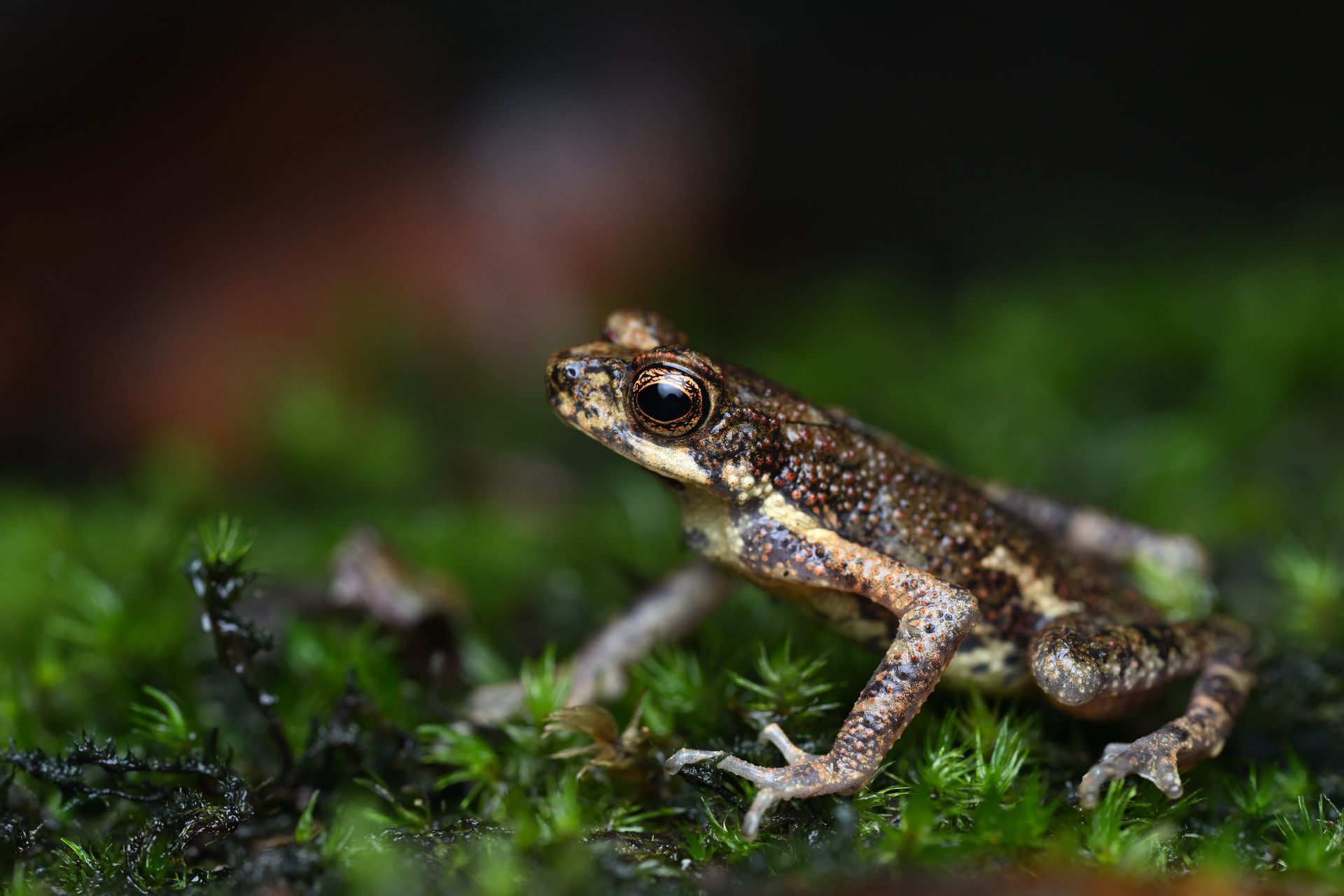
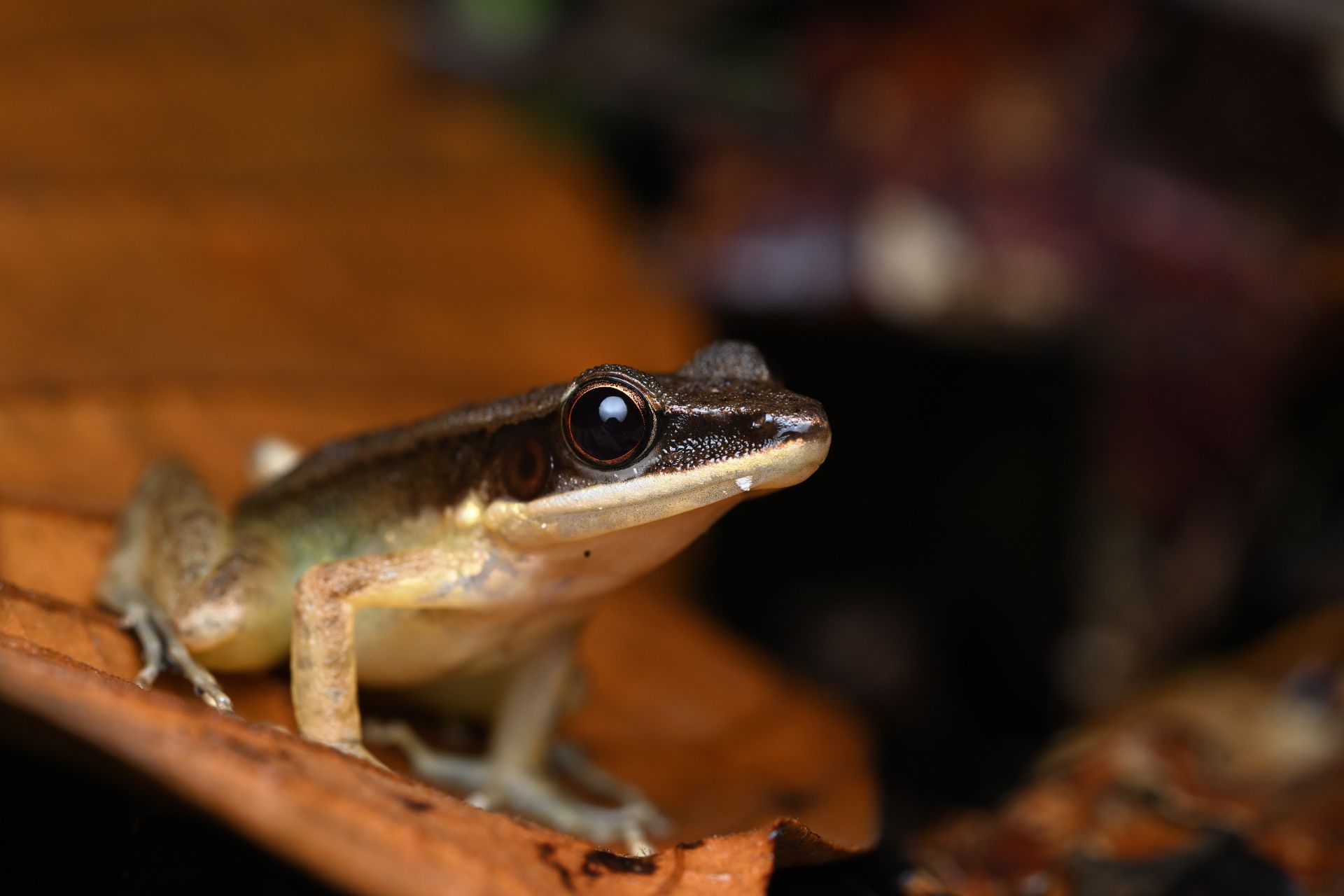
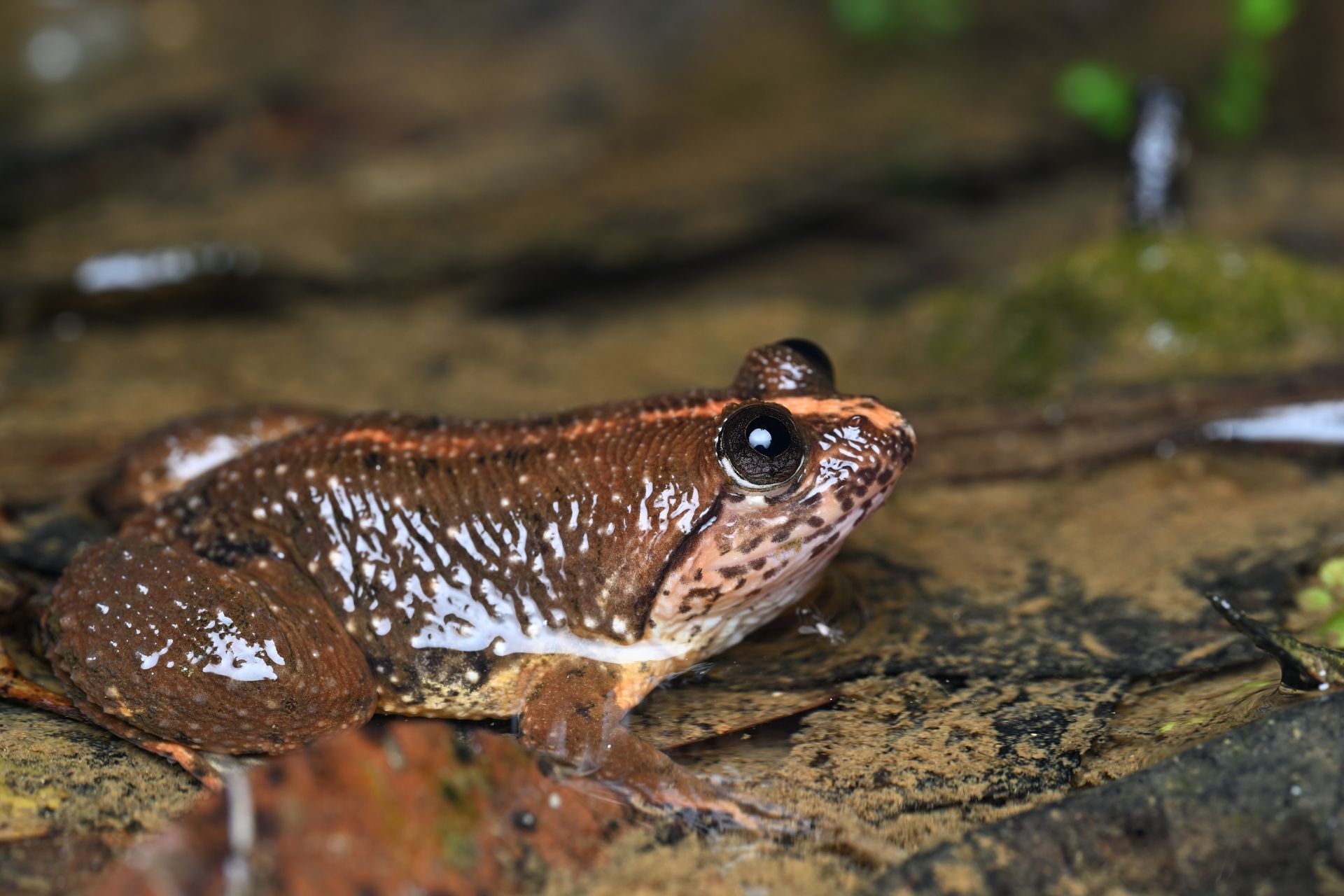
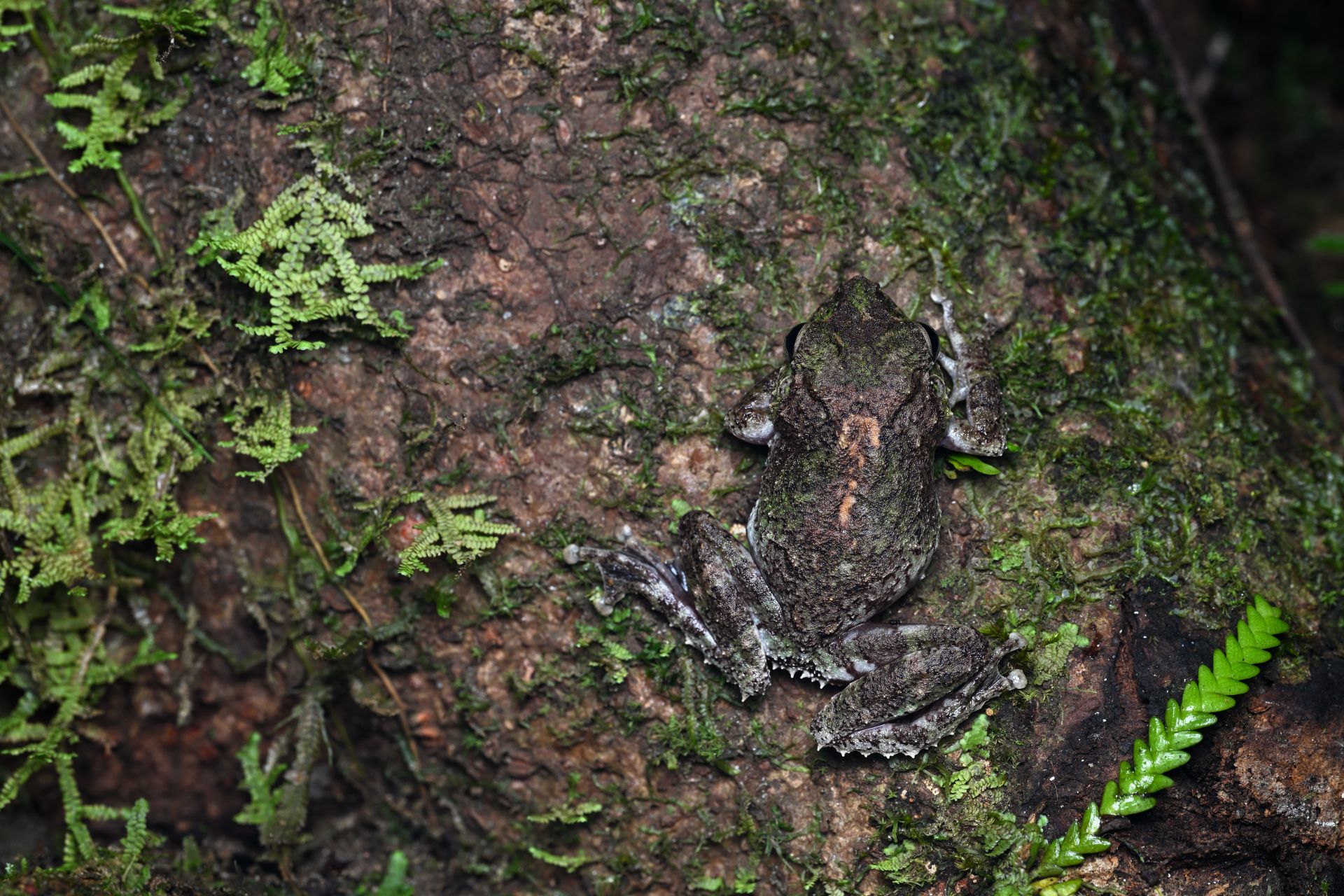
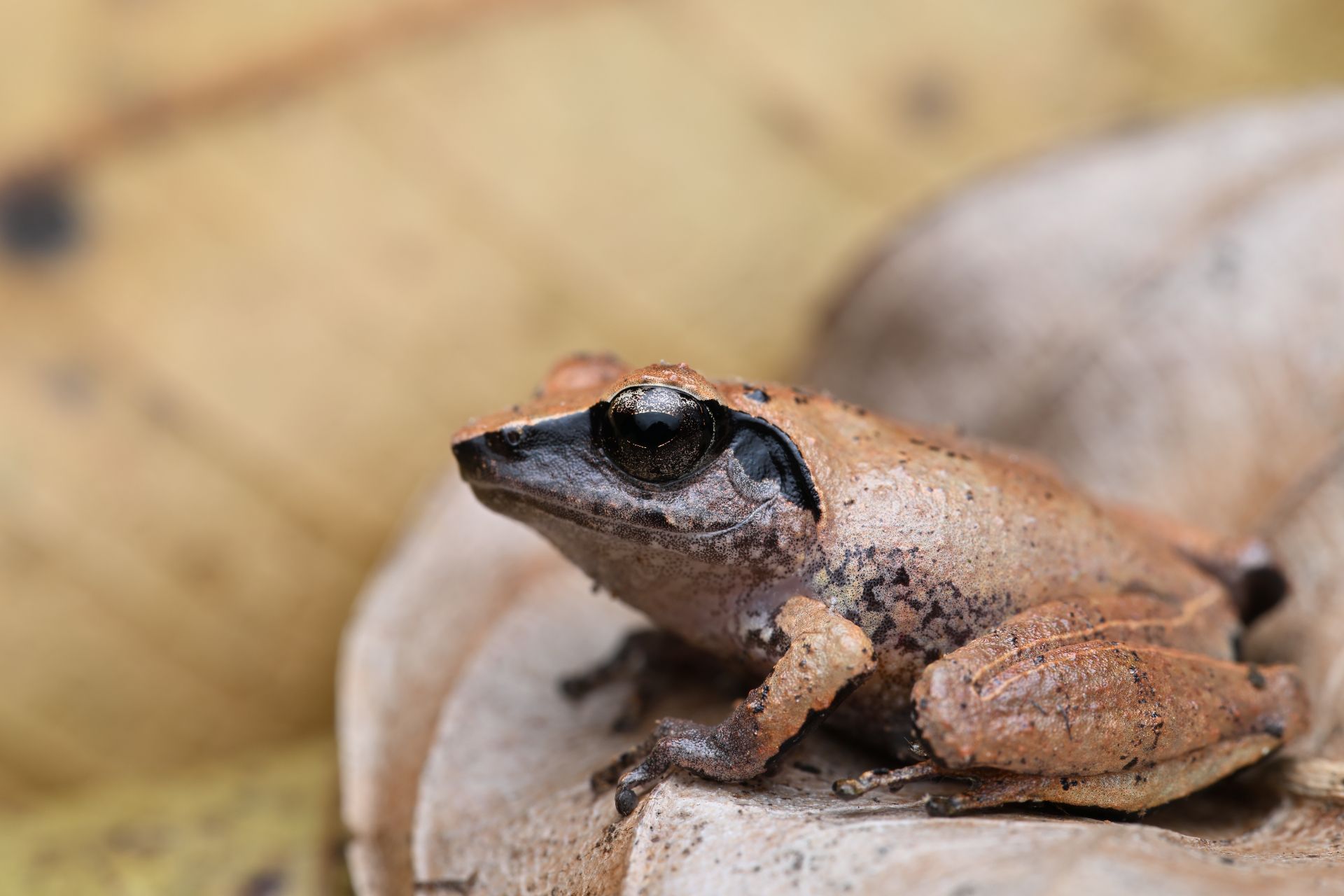
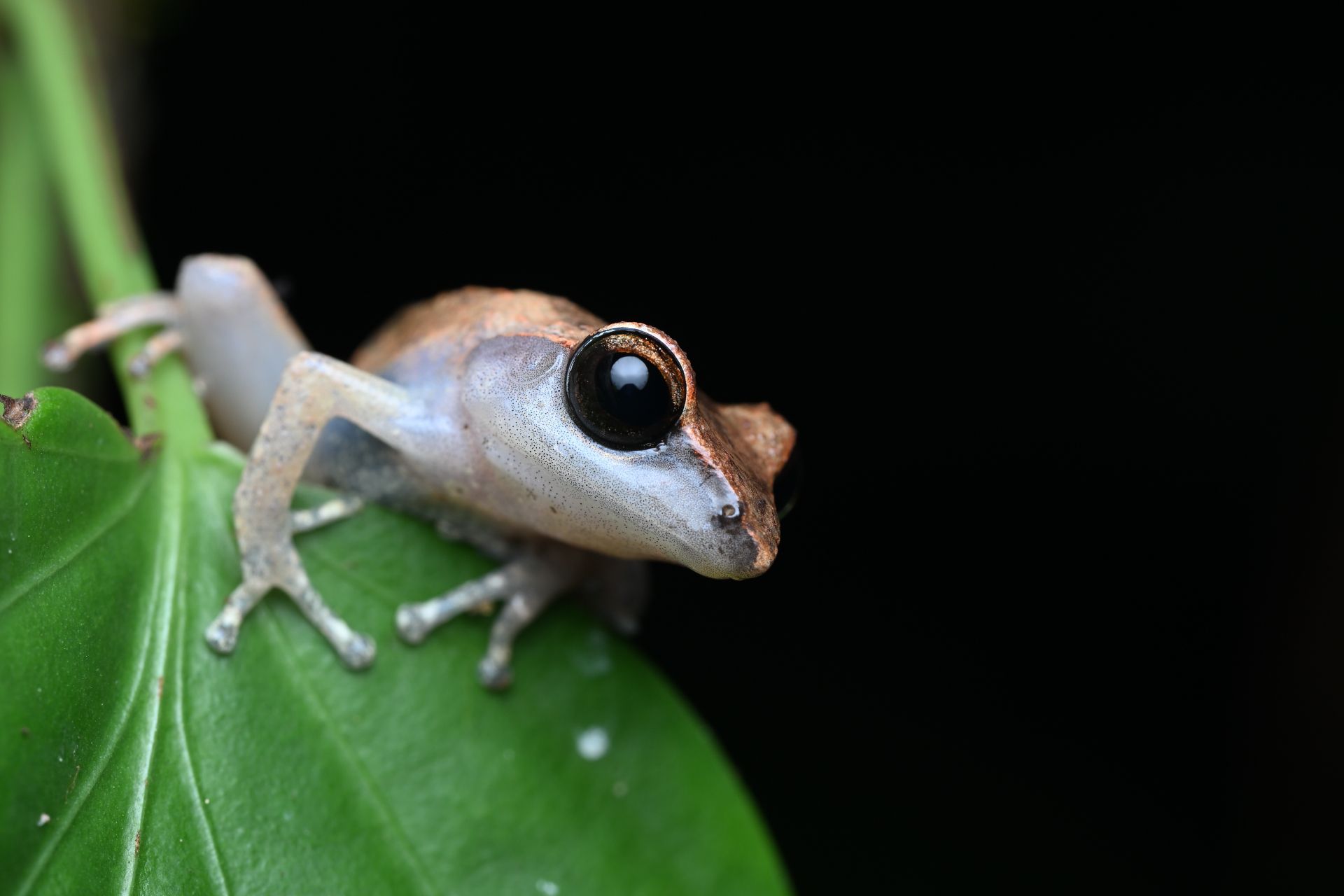
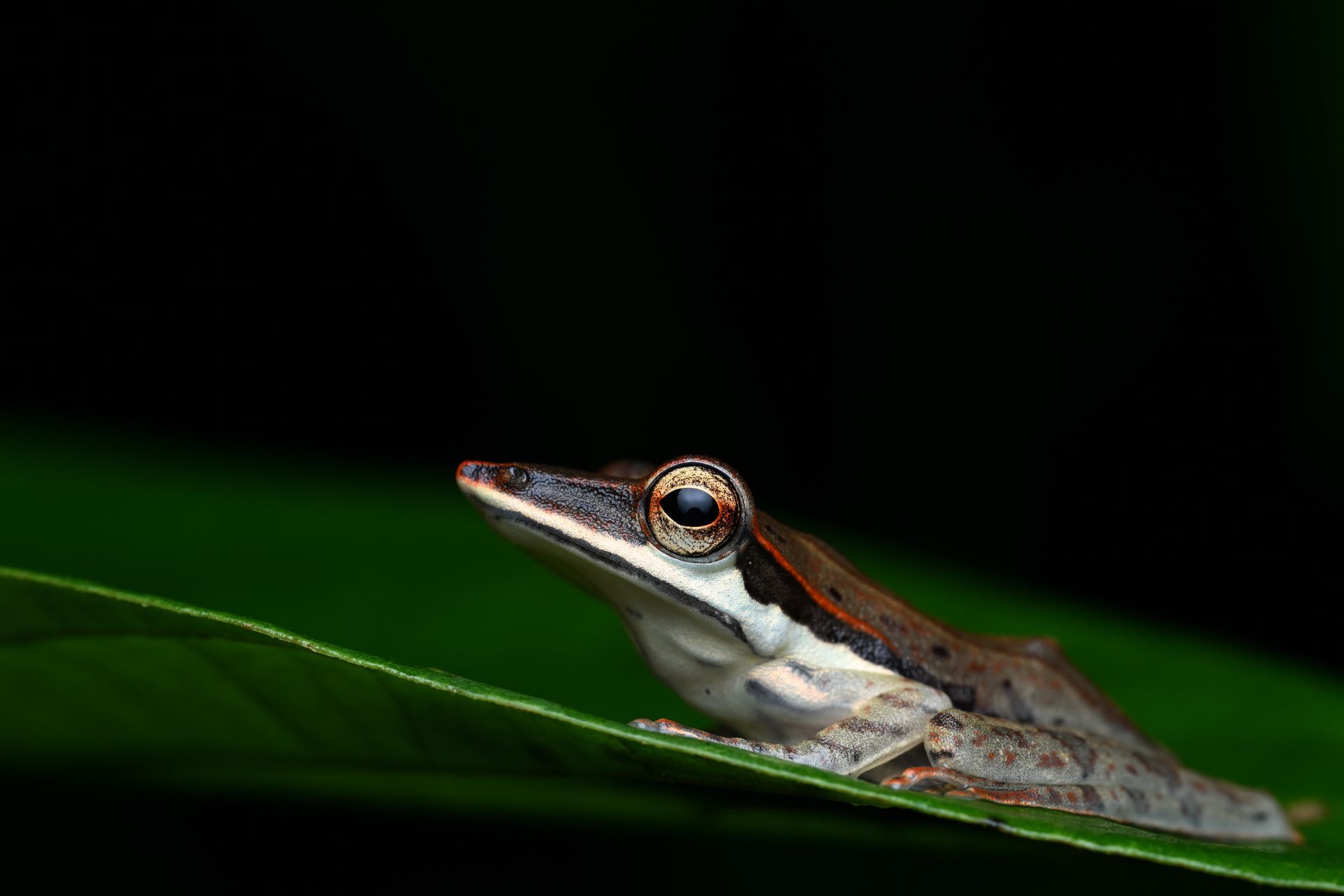
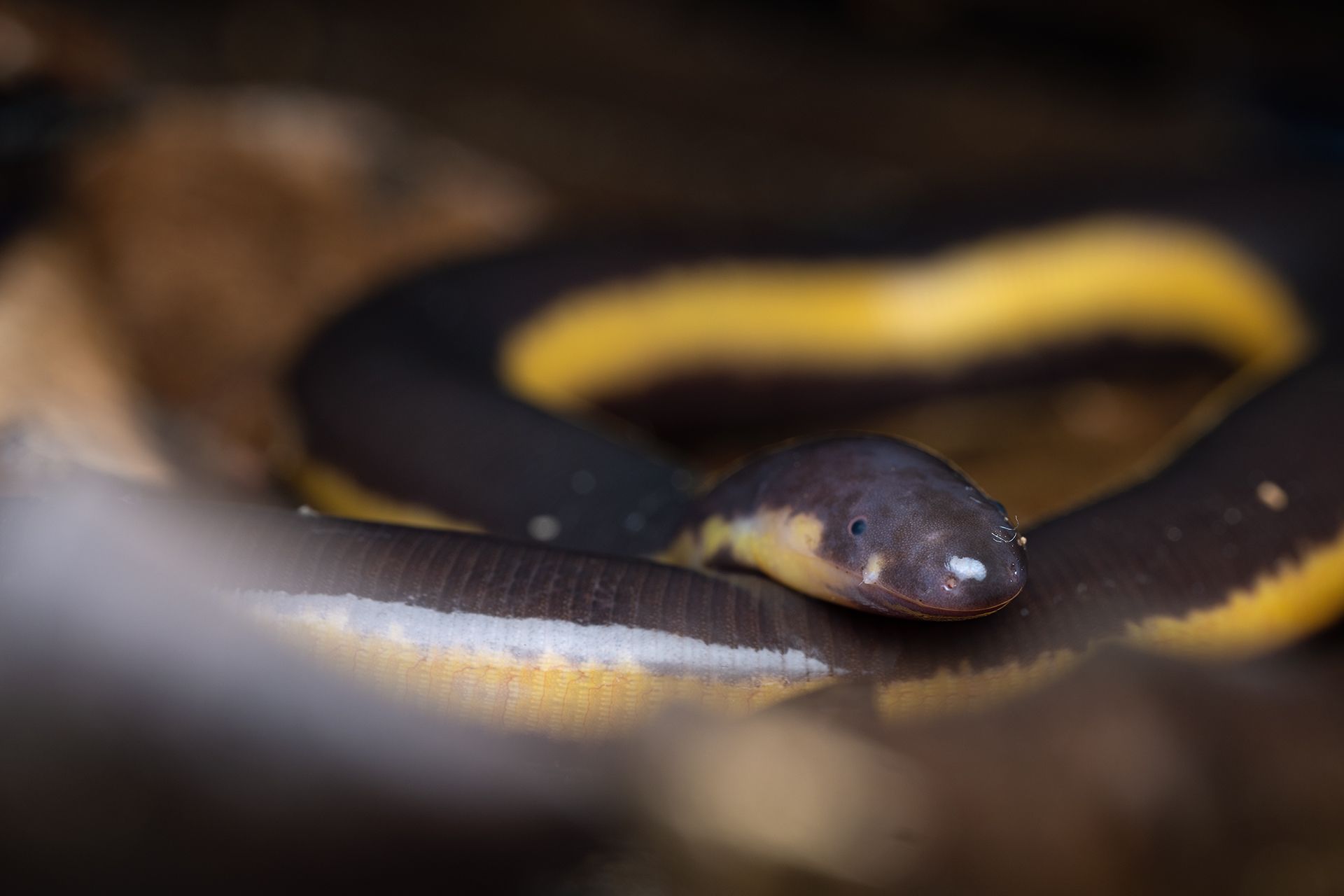
This started off as a simple trip report. But, there was one thing that had been bothering me. Udaya Chanaka's statement about "point endemics" didn't sit well with me. I started doing some reading whenever we had some downtime during the trip. My apprehensions turned out to be unfortunately true.
On the ridge that I'd mentioned at the beginning of the post, all 4 species of Shrub Frogs (genus Pseudophilautus) that were so commonly seen are one step away from extinction. They are Critically Endangered.
According to the IUCN Red List, all these species have limited geographic distribution (with P. lunatus having the lowest estimated extent of occurrence at 26.94 sq km), decreasing trend in populations and they are threatened by human activities including residential and commercial development, mining and quarrying, logging, etc. Restricted to one mountain ridge (and the mountainsides), with "development" closing in from multiple directions, these species are facing imminent extinction.
It doesn't end there. Of the 36 species of frogs that we came across on the trip (35 of them endemic to the island), 12 species are Endangered and 7 are Critically Endangered as per IUCN. Loss of habitat due to human development activities, including agriculture, housing, roads and tourism, reduces the home areas of many of these already restricted species. Pollution, both in the vicinity and from far away, can cause much damage to these fragile animals. And, what we do at home many thousands of kilometres away impacts them too. Climate change is a massive threat, as increasing temperatures and decreasing rainfall make habitats drier and prone to forest fires.
By no means is this happening only in Sri Lanka. Globally, we hear about extinctions so often these days that it has become normalised. Endangered mammal evoke emotion and (in a few cases) action to conserve them and their habitats. Amphibians, which receive little to no attention, are going extinct at a far more shocking rate than other vertebrates. The numbers below shout for attention.
...the current extinction rate of amphibians could be 211 times the background amphibian extinction rate. If current estimates of amphibian species in imminent danger of extinction are included in these calculations, then the current amphibian extinction rate may range from 25,039–45,474 times the background extinction rate for amphibians. It is difficult to explain this unprecedented and accelerating rate of extinction as a natural phenomenon - MALCOLM L. MCCALLUM 2007
The frogs have all but vanished from my backyard in Hyderabad. It gives me some comfort when I come across some of these species regularly in the countryside and in wilderness. Some species are generalists that can probably thrive in a variety of habitats, with some amount of human interference. Yet, the questions remain - how much is too much? What is the future for species like the Shrub Frogs of Sri Lanka that are already on the edge? And, how long would it be before they disappear from their (and our) home planet?
"Even so, the loss of a few species may seem irrelevant compared to major environmental problems such as global warming or the destruction of the ozone layer. But while nature has considerable resilience, there is a limit to how far that resilience can be stretched. No one knows how close to the limit we are getting. The darker it gets, the faster we're driving.
There is one last reason for caring, and I believe that no other is necessary. It is certainly the reason why so many people have devoted their lives to protecting the likes of rhinos, parakeets, kakapos, and dolphins. And it is simply this: the world would be a poorer, darker, lonelier place without them.”
― Douglas Adams & Mark Carwardine, Last Chance to See
References (and a further reading list)
- Ellepola G, Herath J, Manamendra-Arachchi K, Wijayathilaka N, Senevirathne G, Pethiyagoda R, et al. (2021) Molecular species delimitation of shrub frogs of the genus Pseudophilautus (Anura, Rhacophoridae). PLoS ONE 16(10): e0258594. https://doi.org/10.1371/journal.pone.0258594
- IUCN Redlist - Lankanectes pera - https://www.iucnredlist.org/species/163971035/164032396
- McCallum, M. L. (2007). "Amphibian Decline or Extinction? Current Declines Dwarf Background Extinction Rate"(PDF). Journal of Herpetology. 41 (3): 483–491. doi:10.1670/0022-1511(2007)41[483:ADOECD]2.0.CO;2. S2CID30162903. Archived from the original(PDF) on 2008-12-17.
- IUCN Redlist - Pseudophilautus lunatus - https://www.iucnredlist.org/species/58866/156582876
- Wikipedia - Decline in amphibian populations - https://en.wikipedia.org/wiki/Decline_in_amphibian_populations
